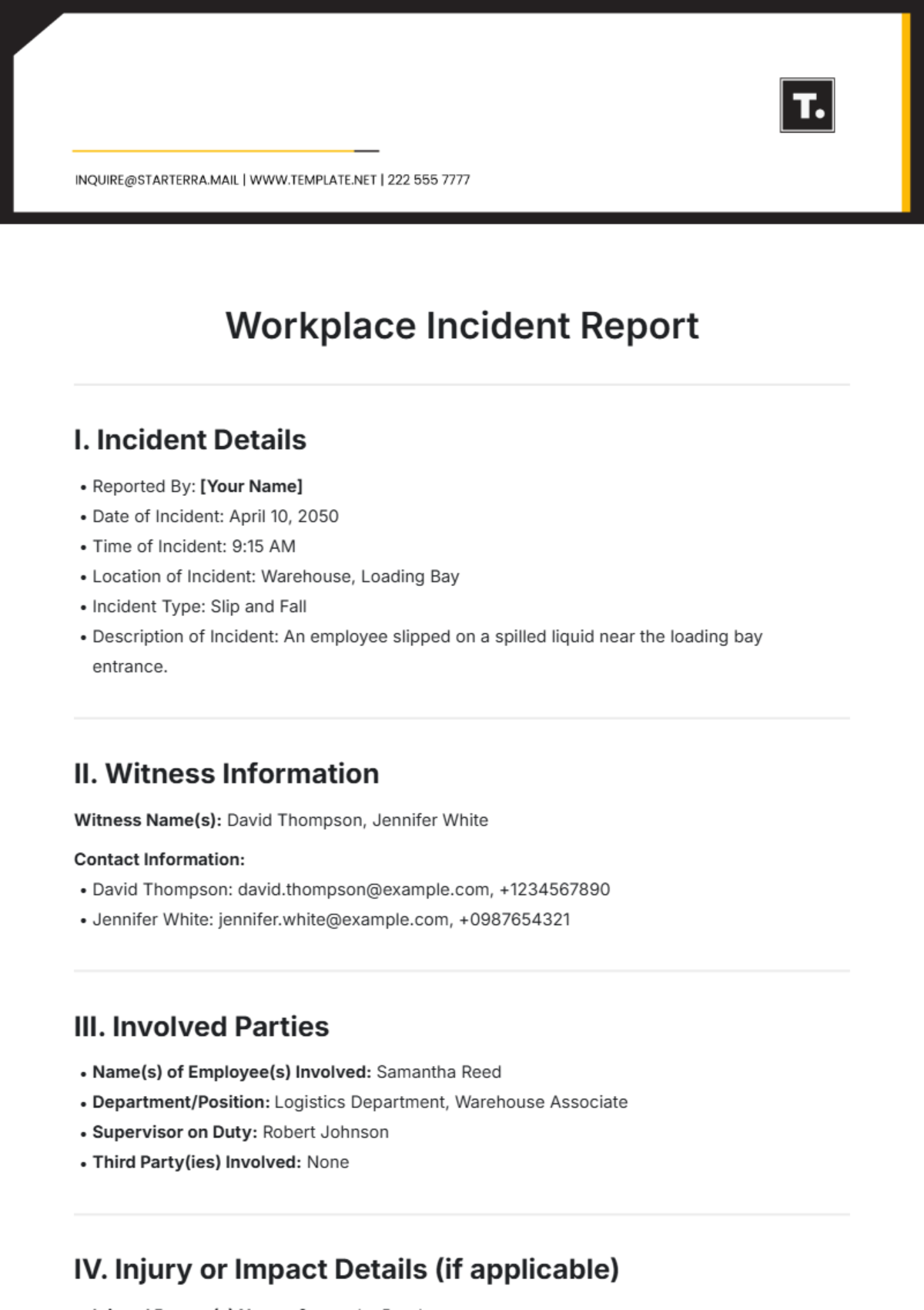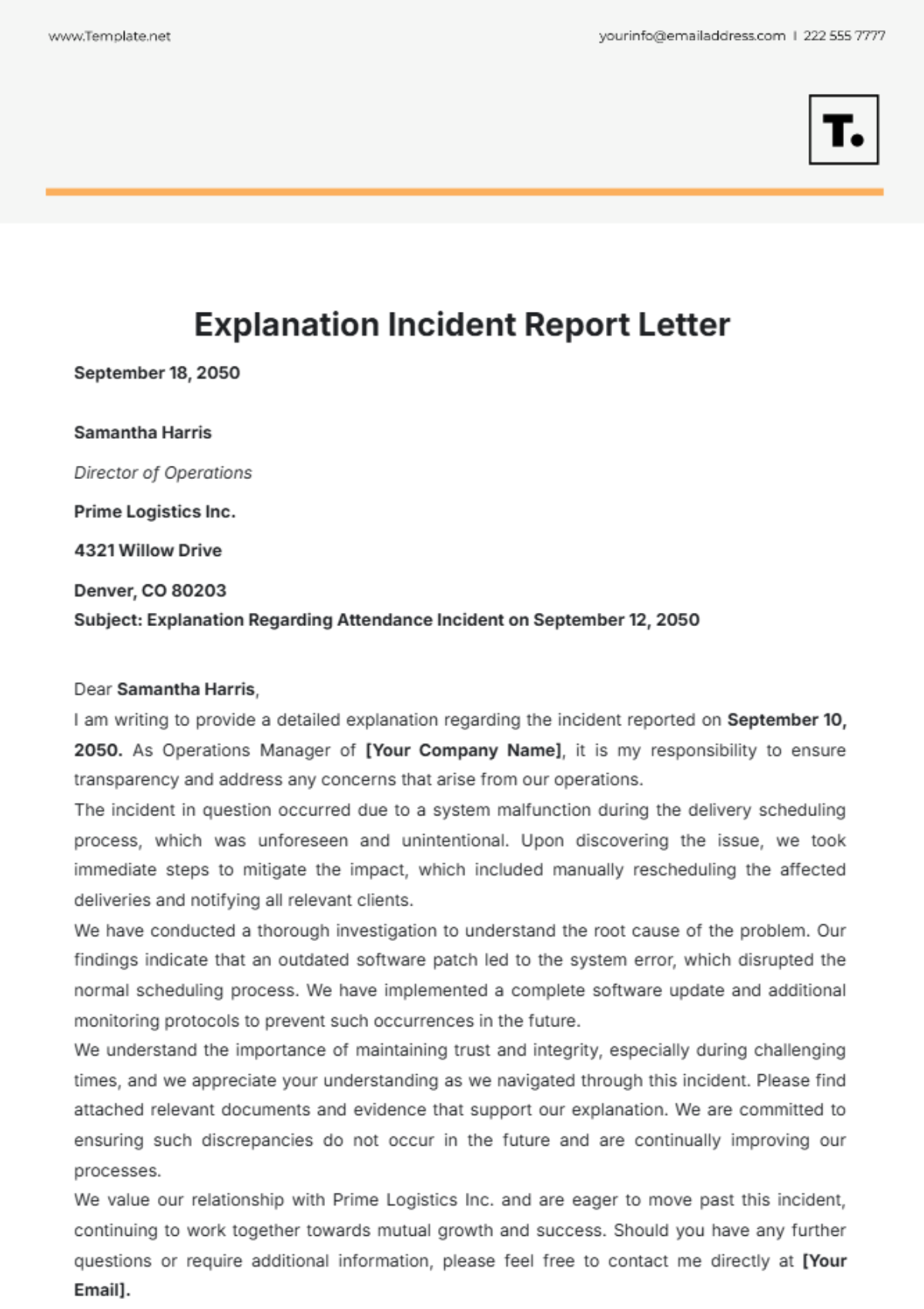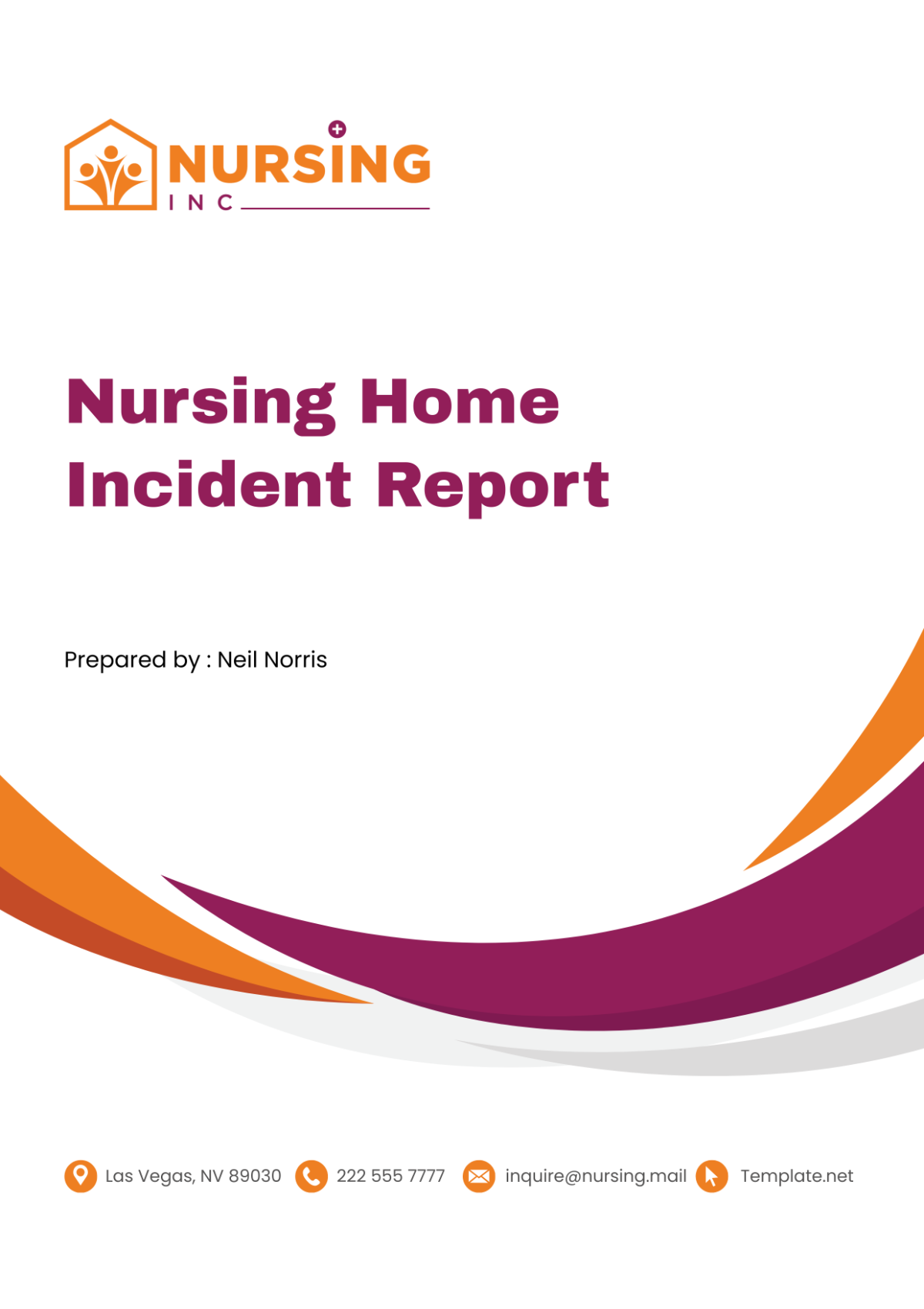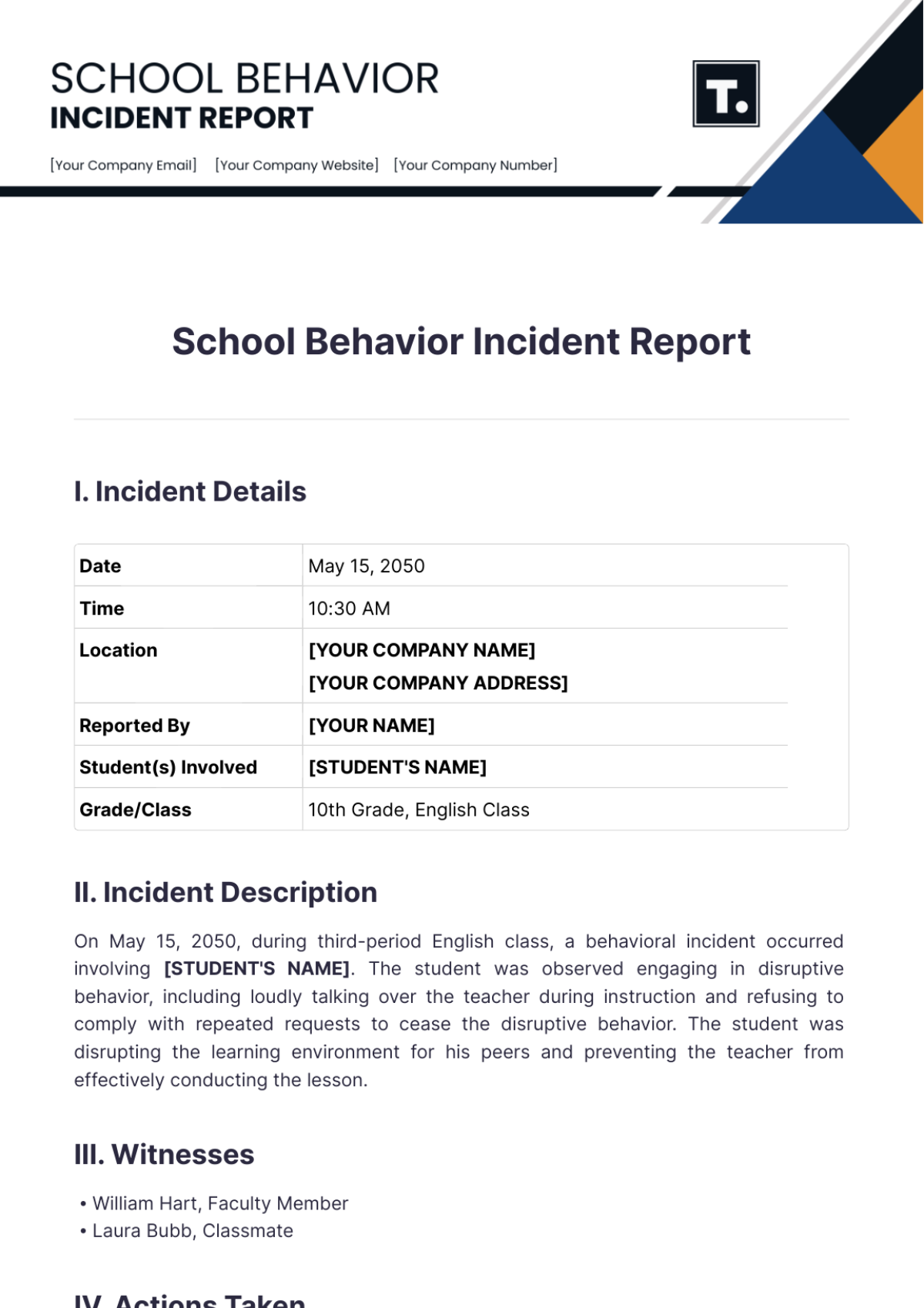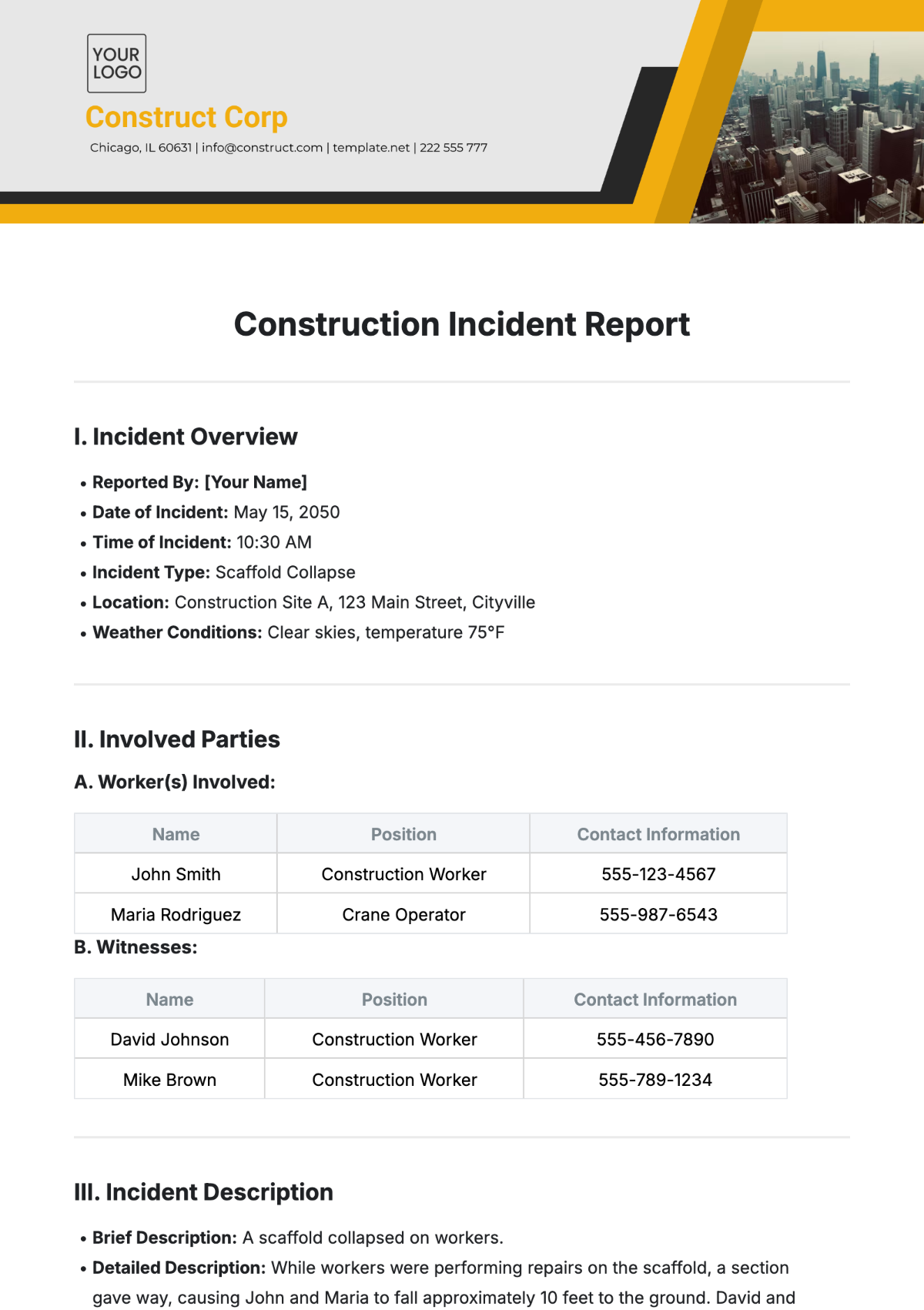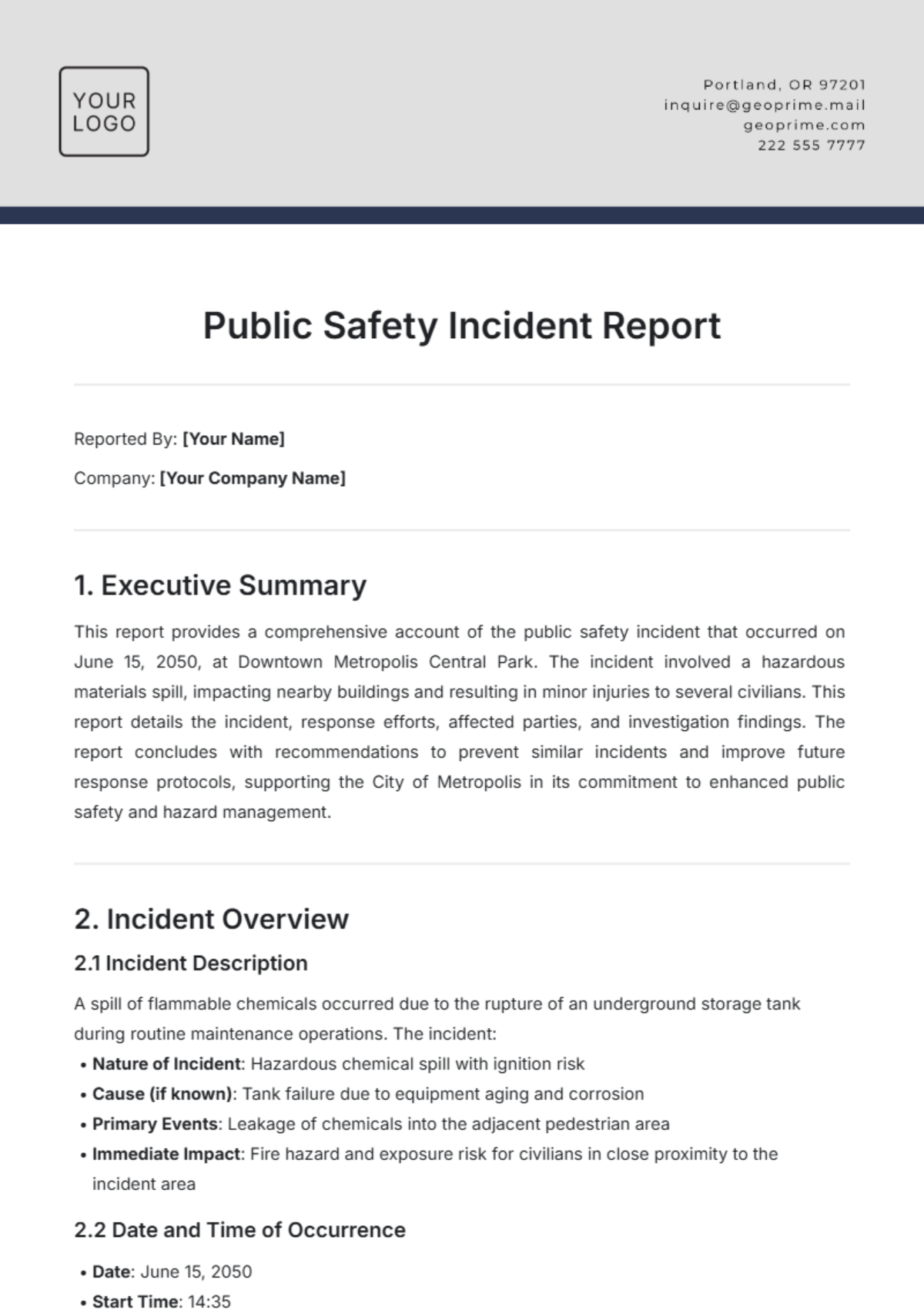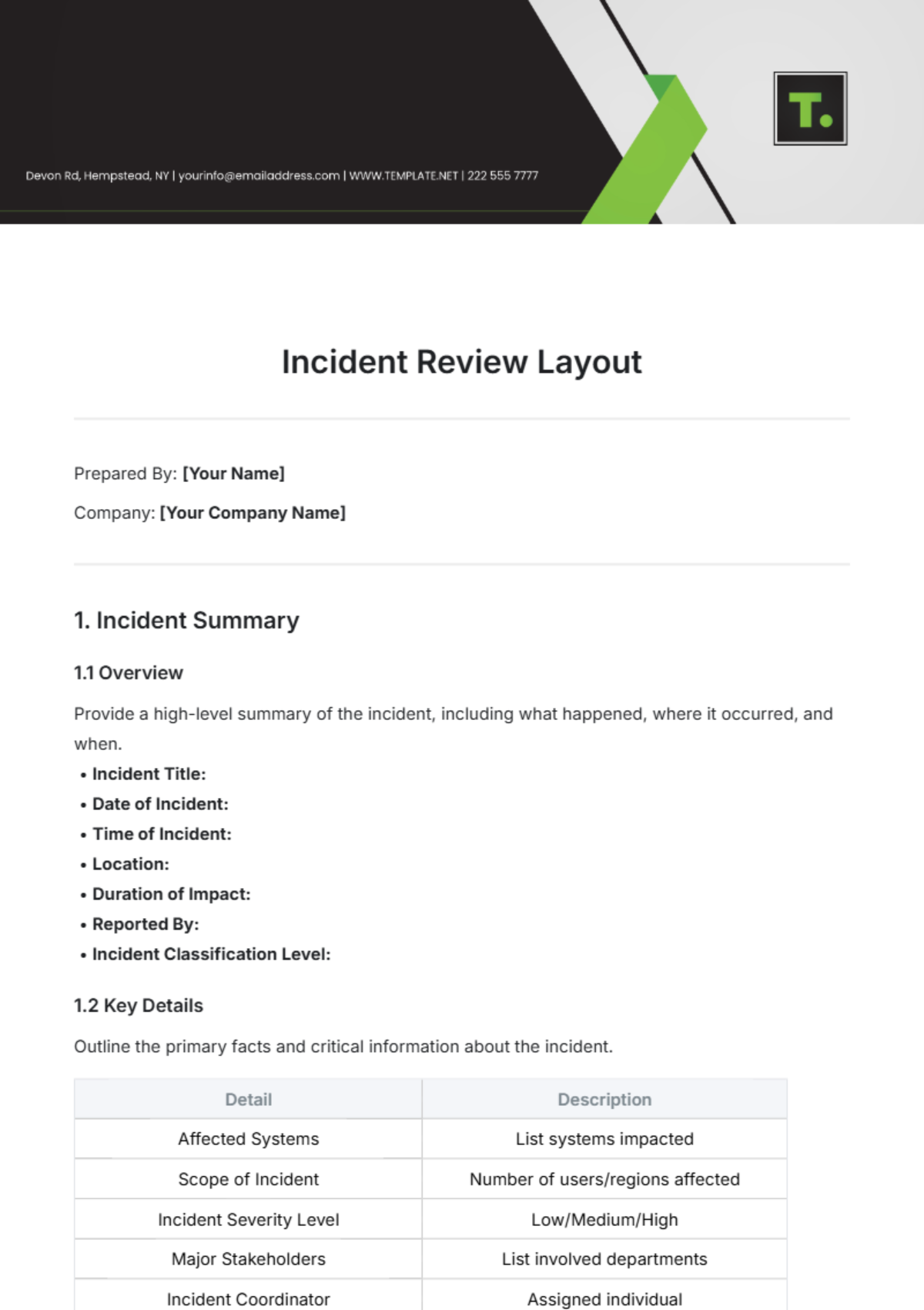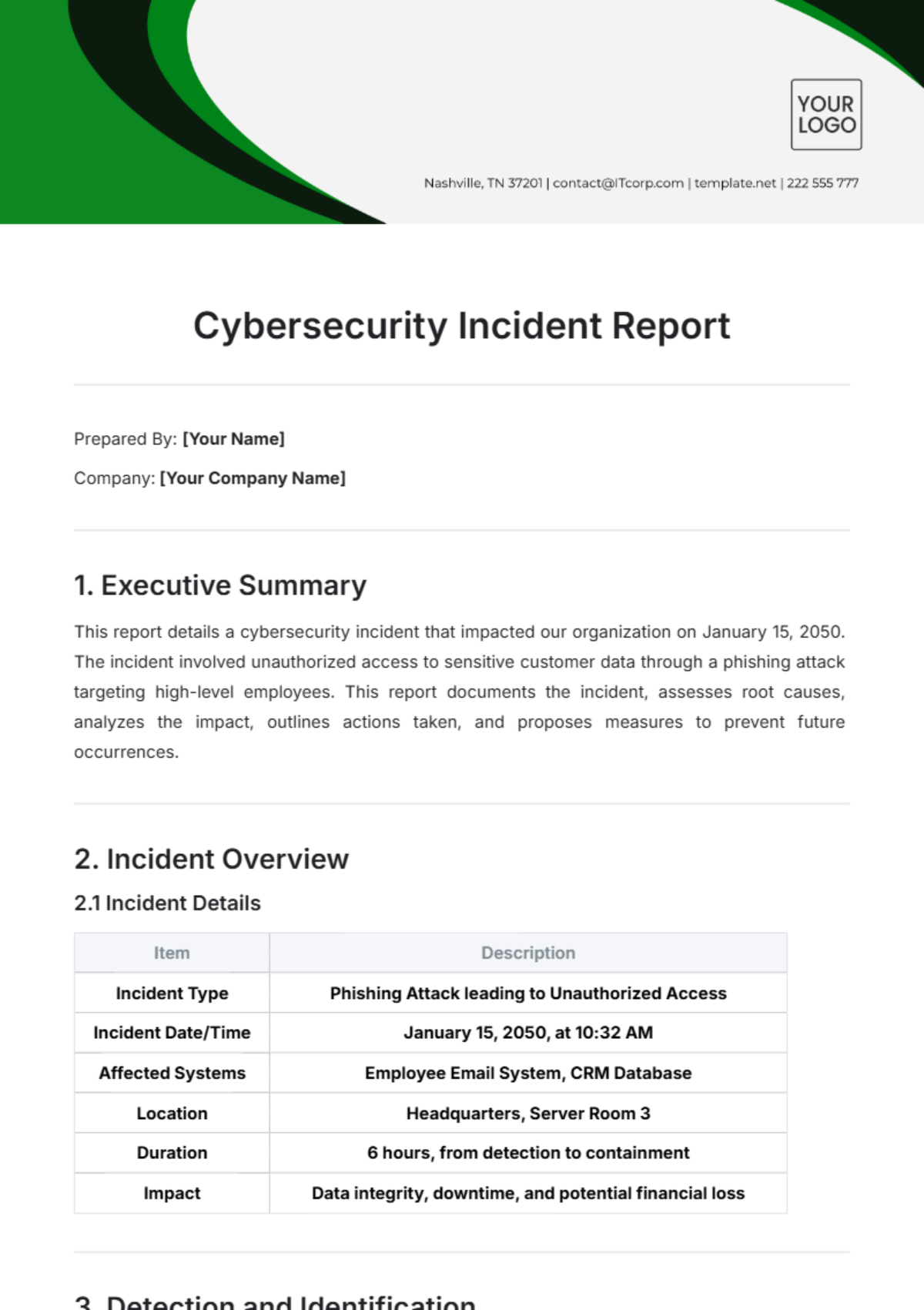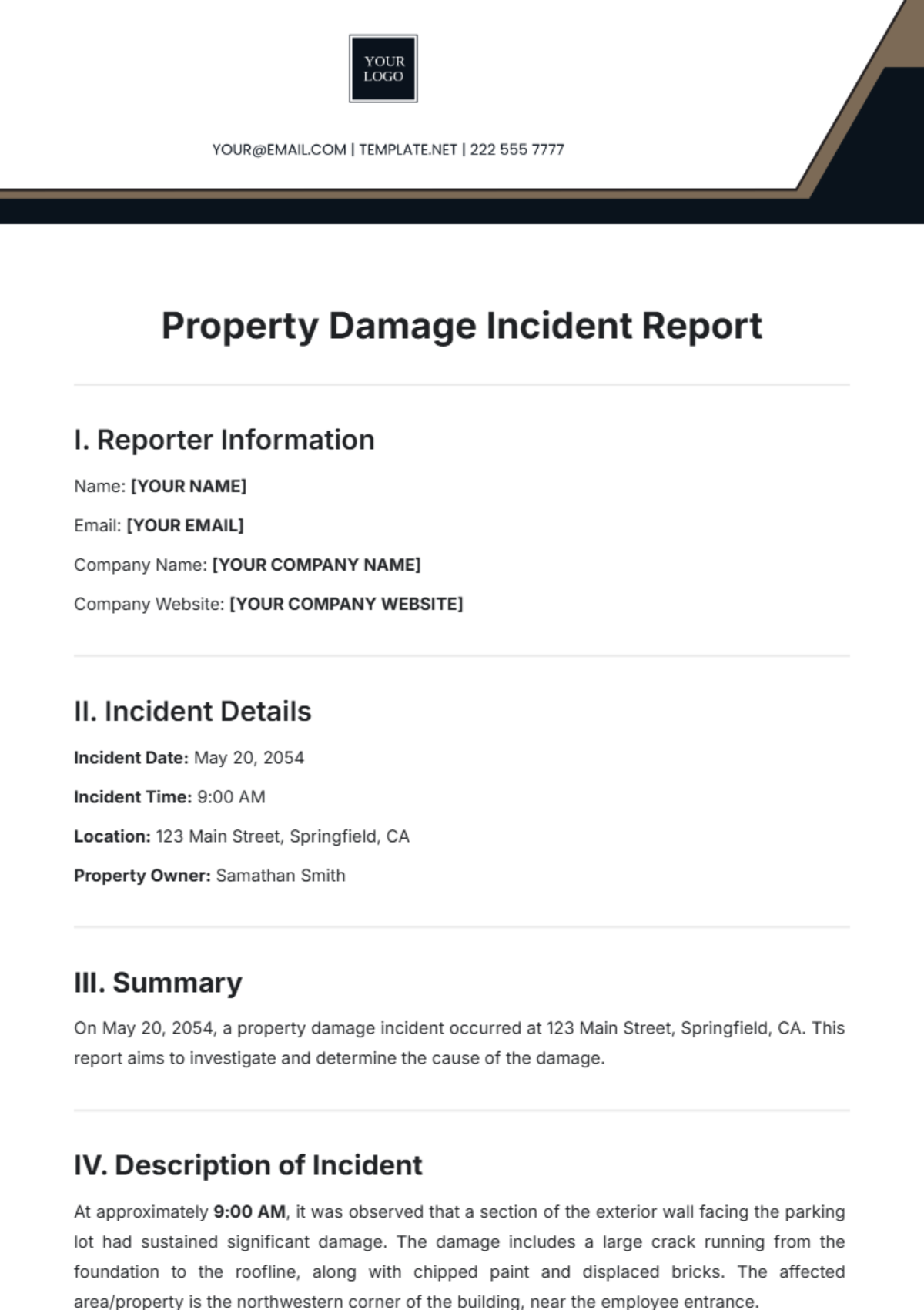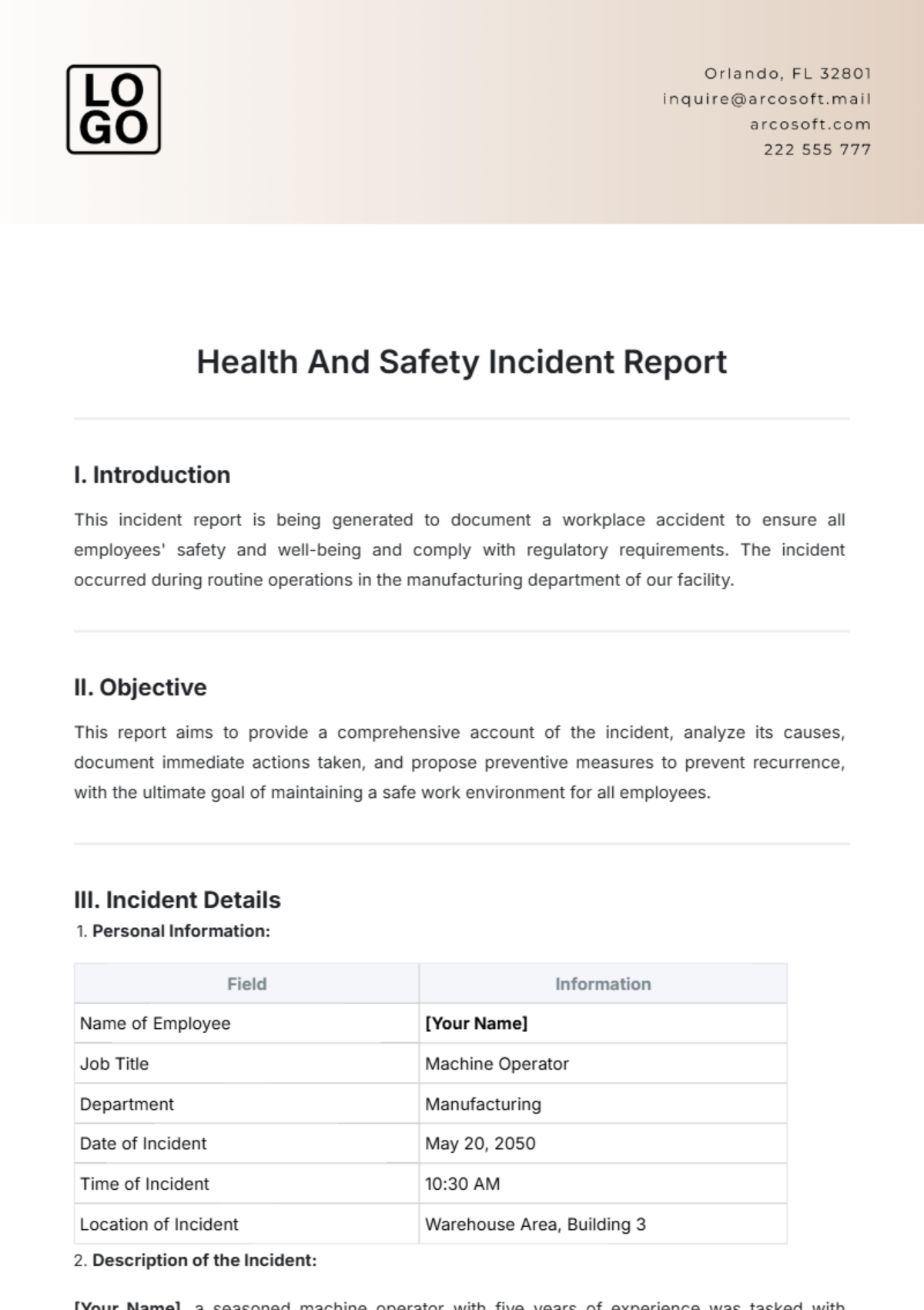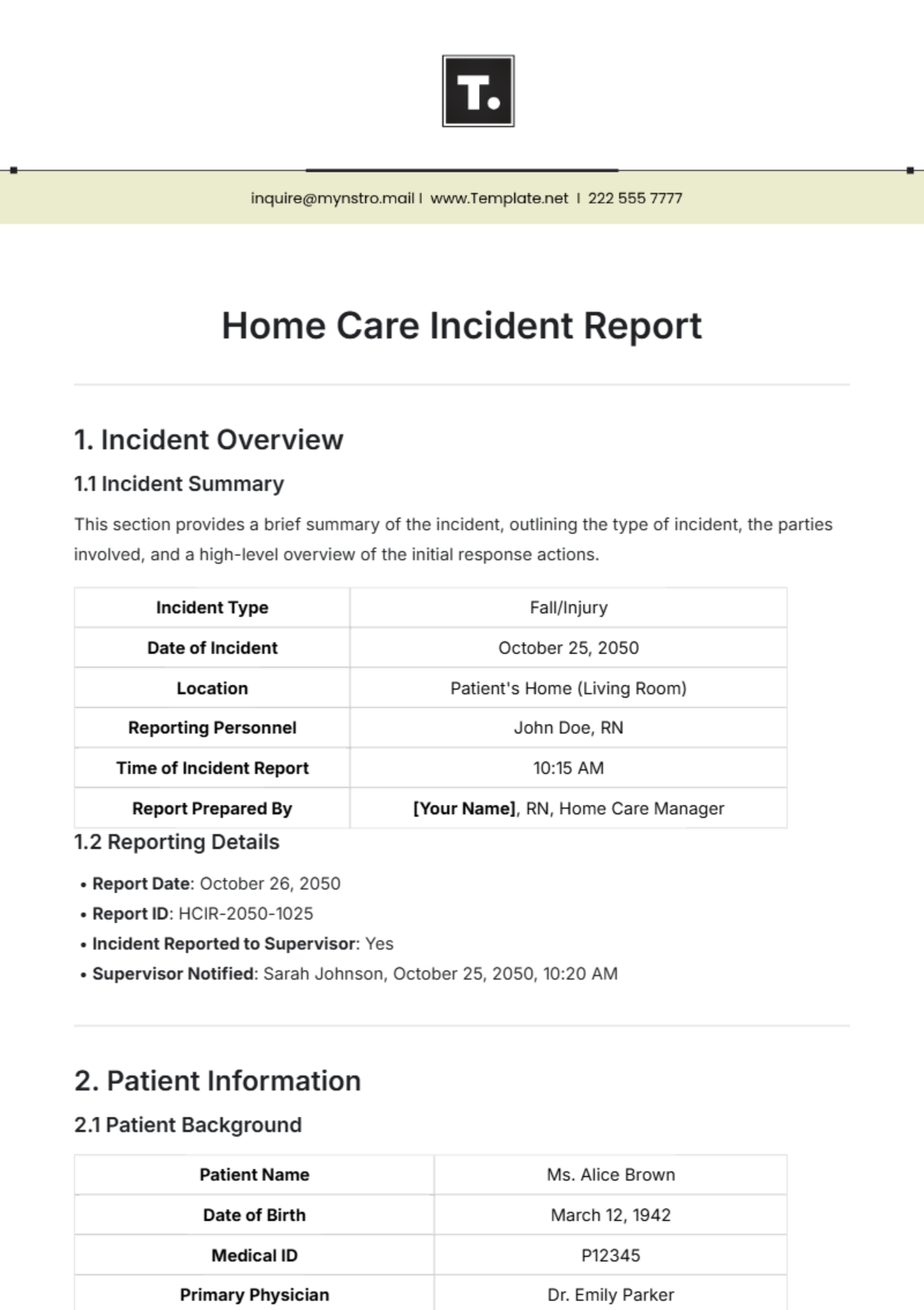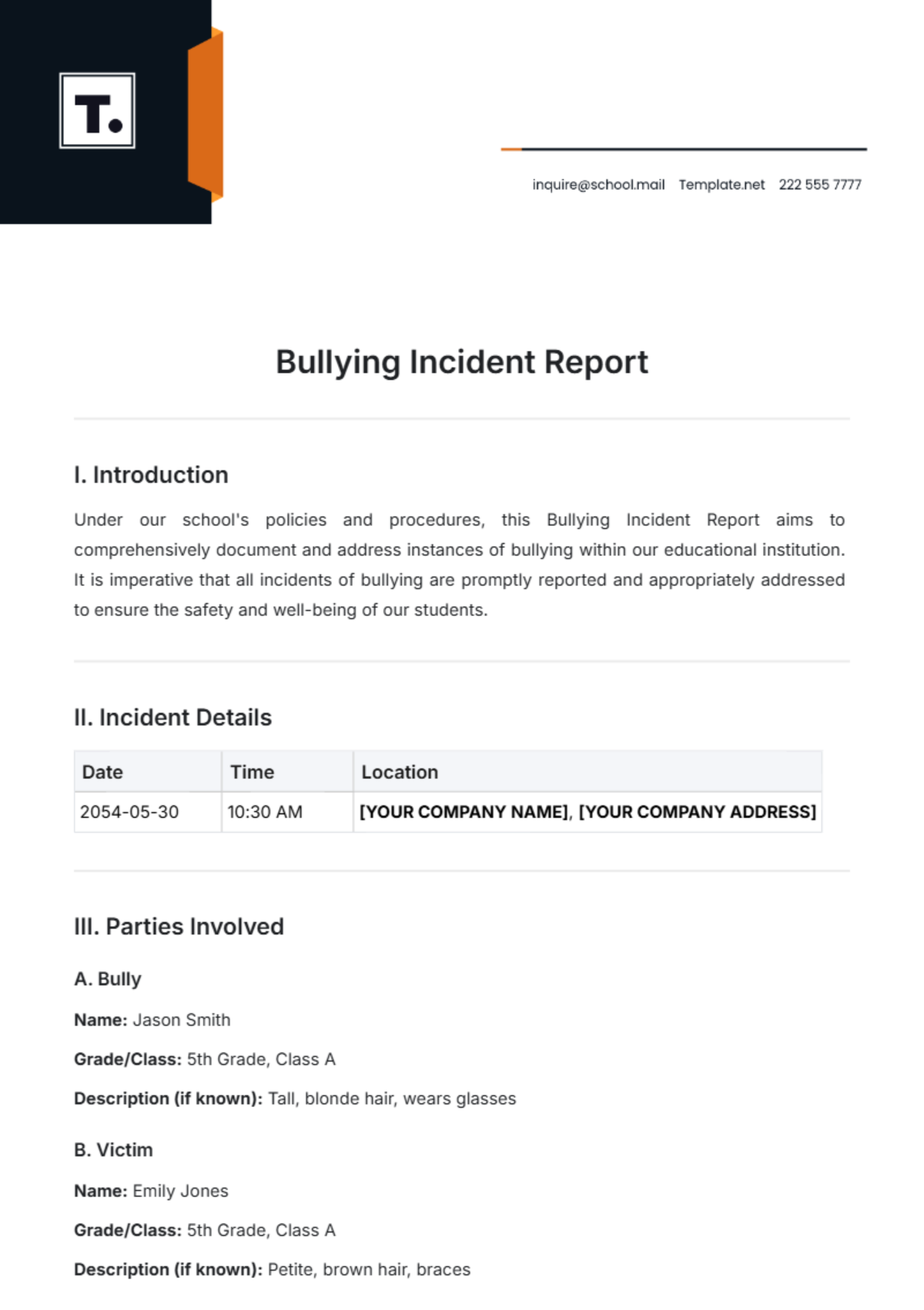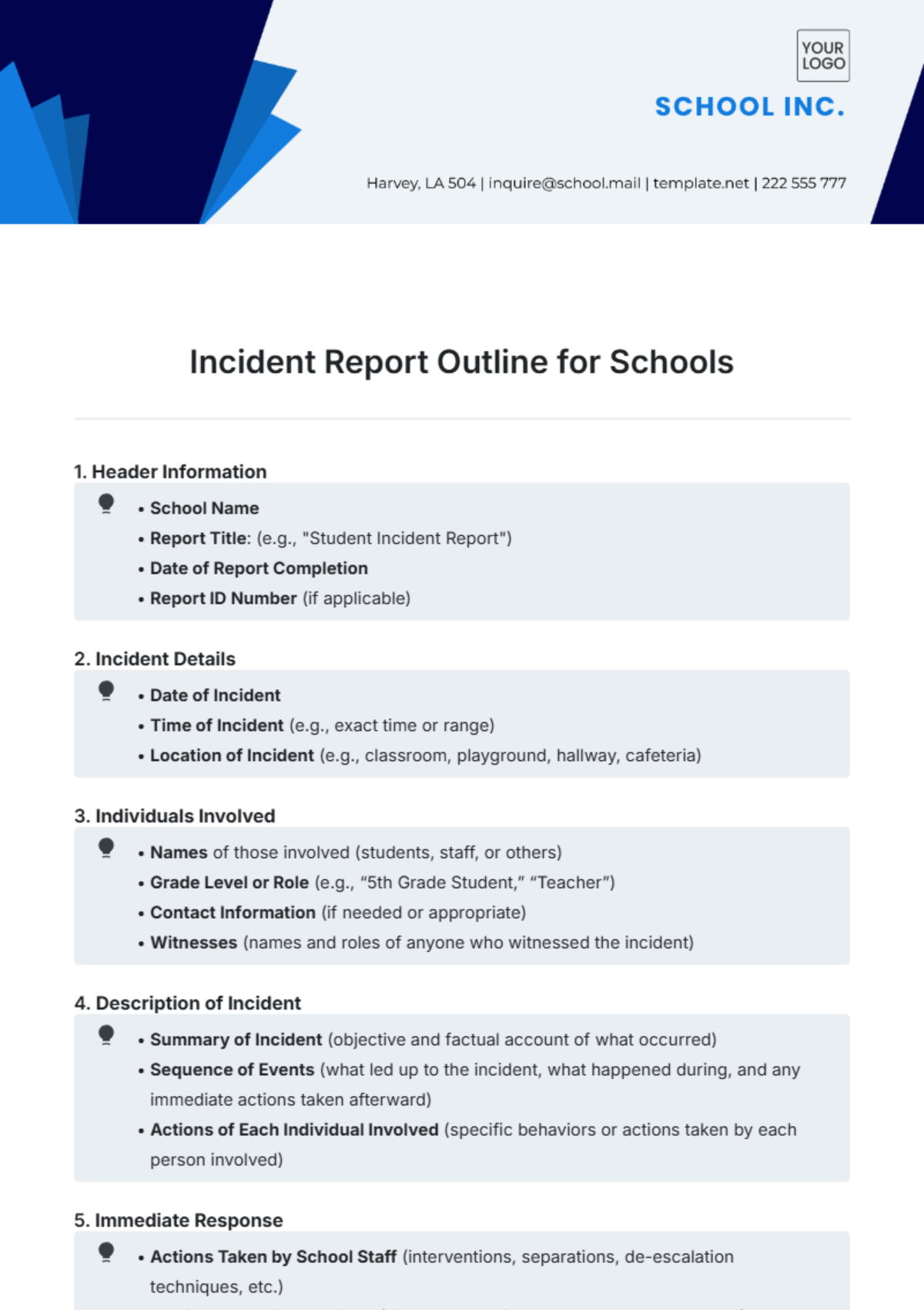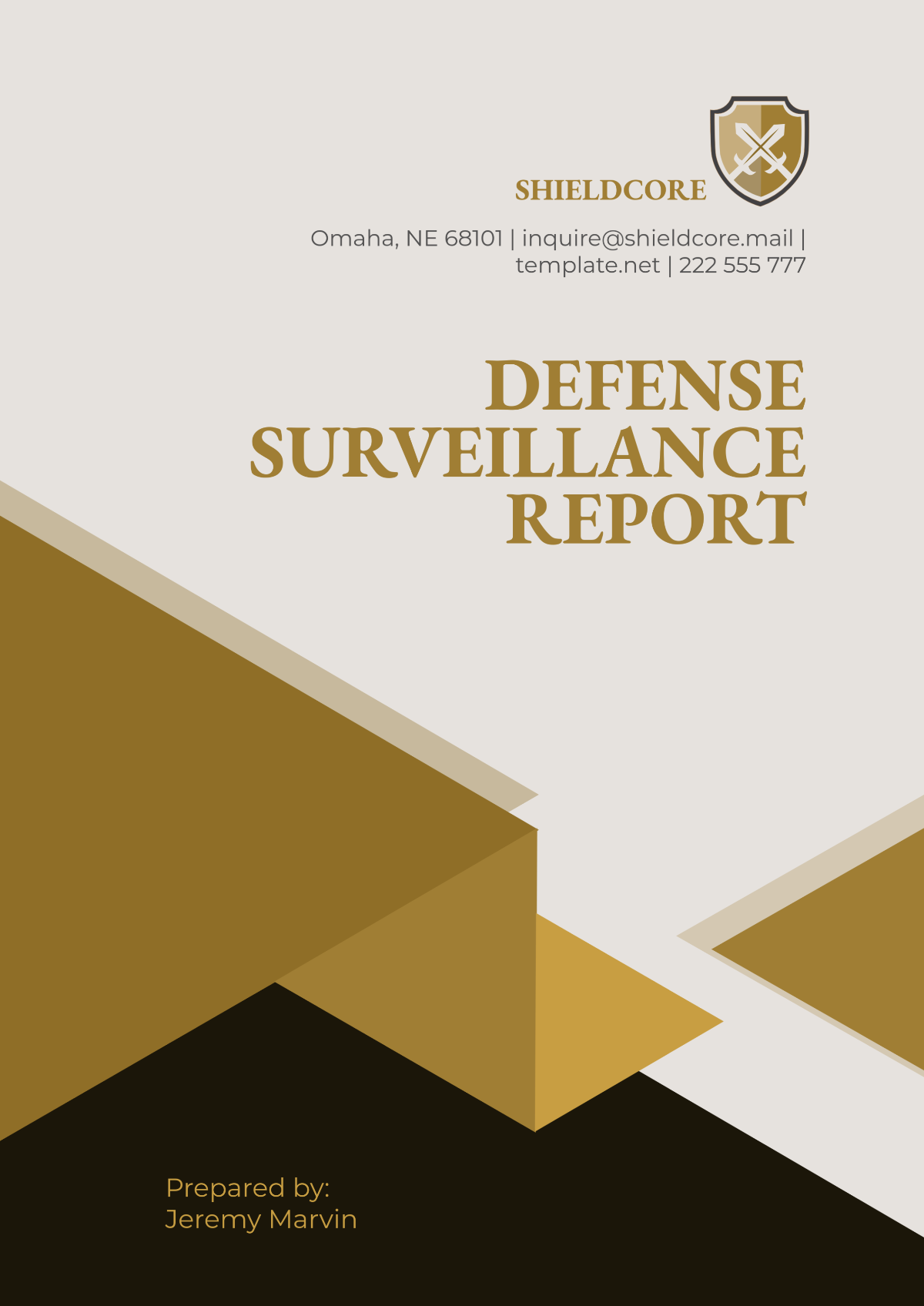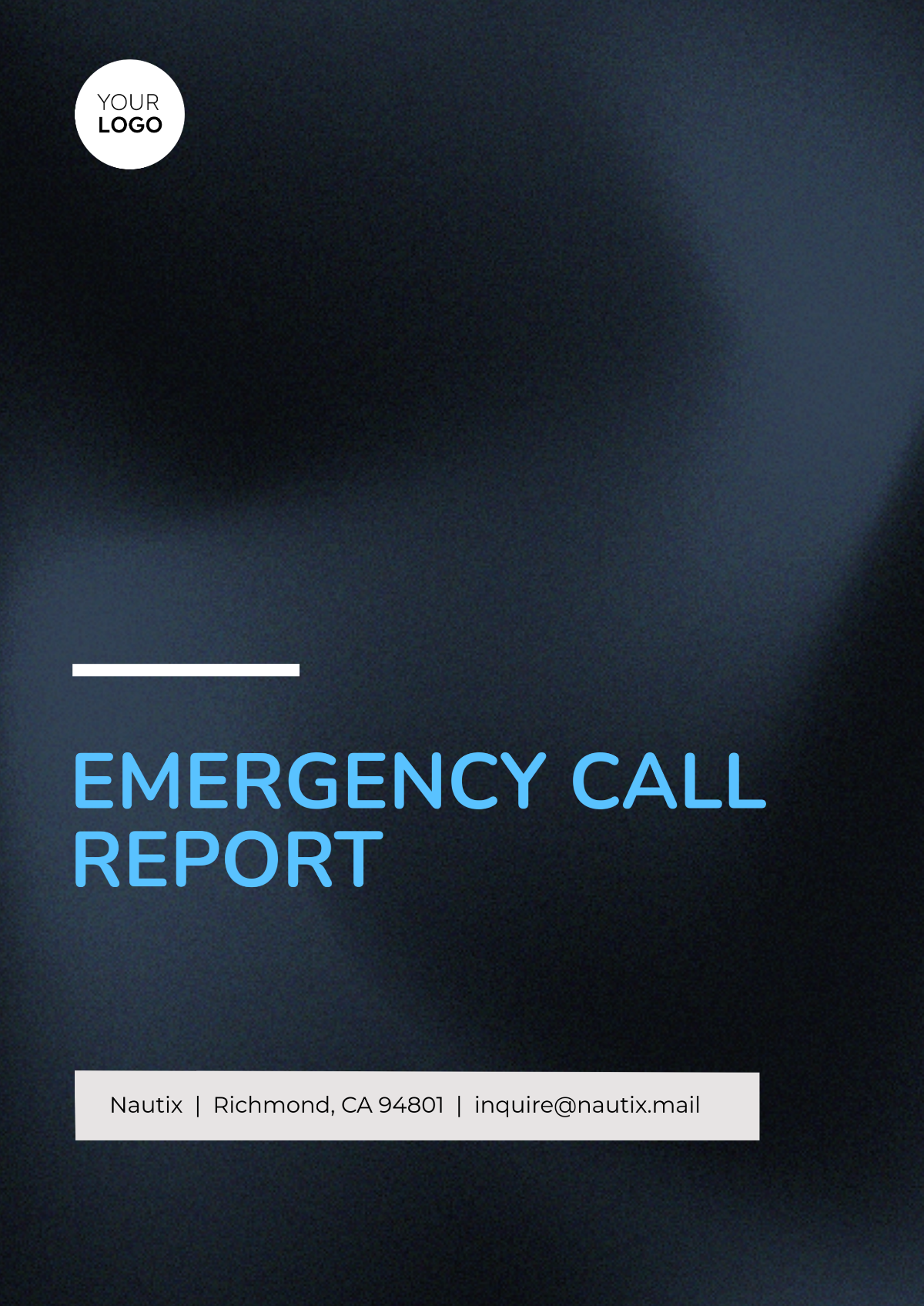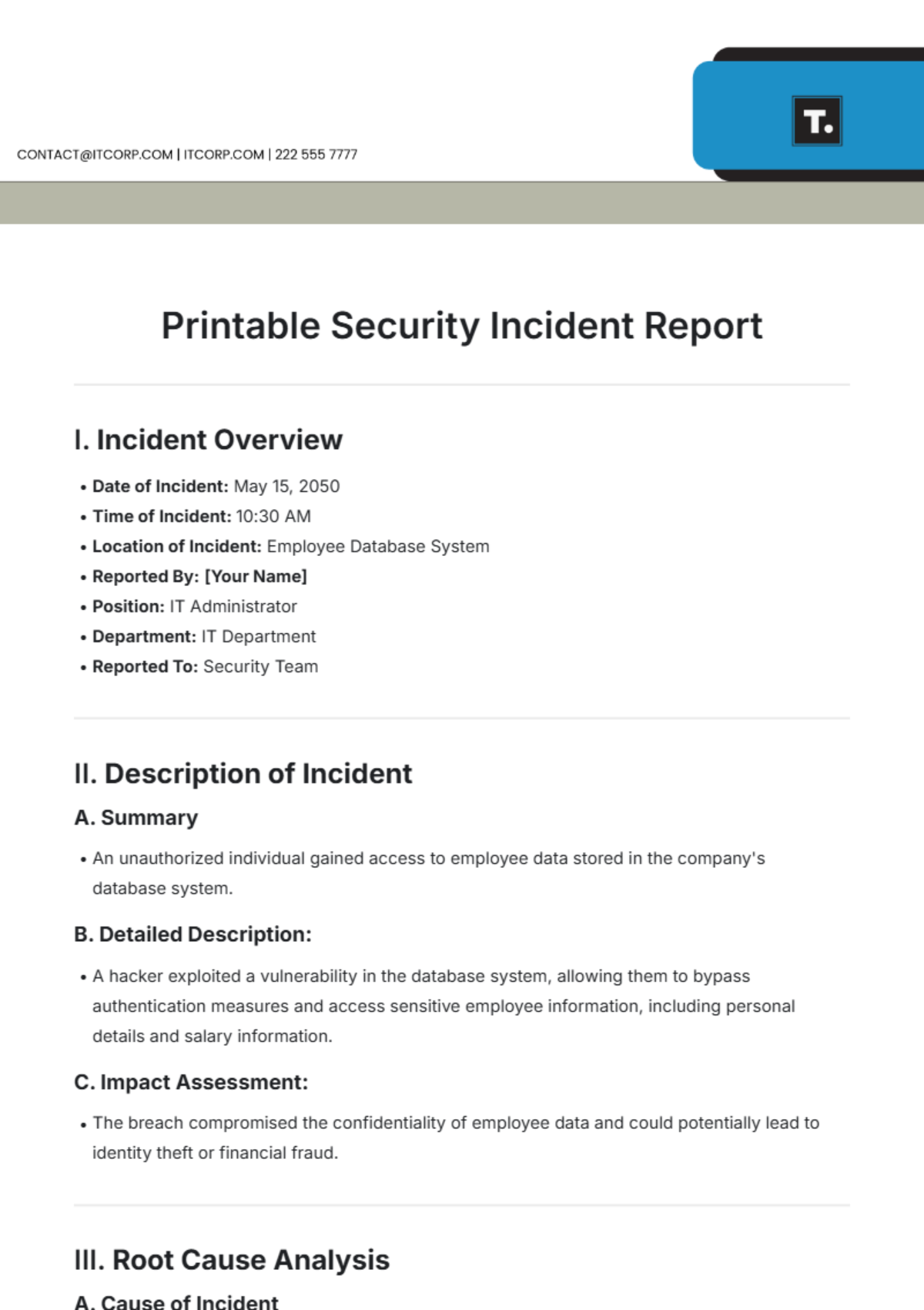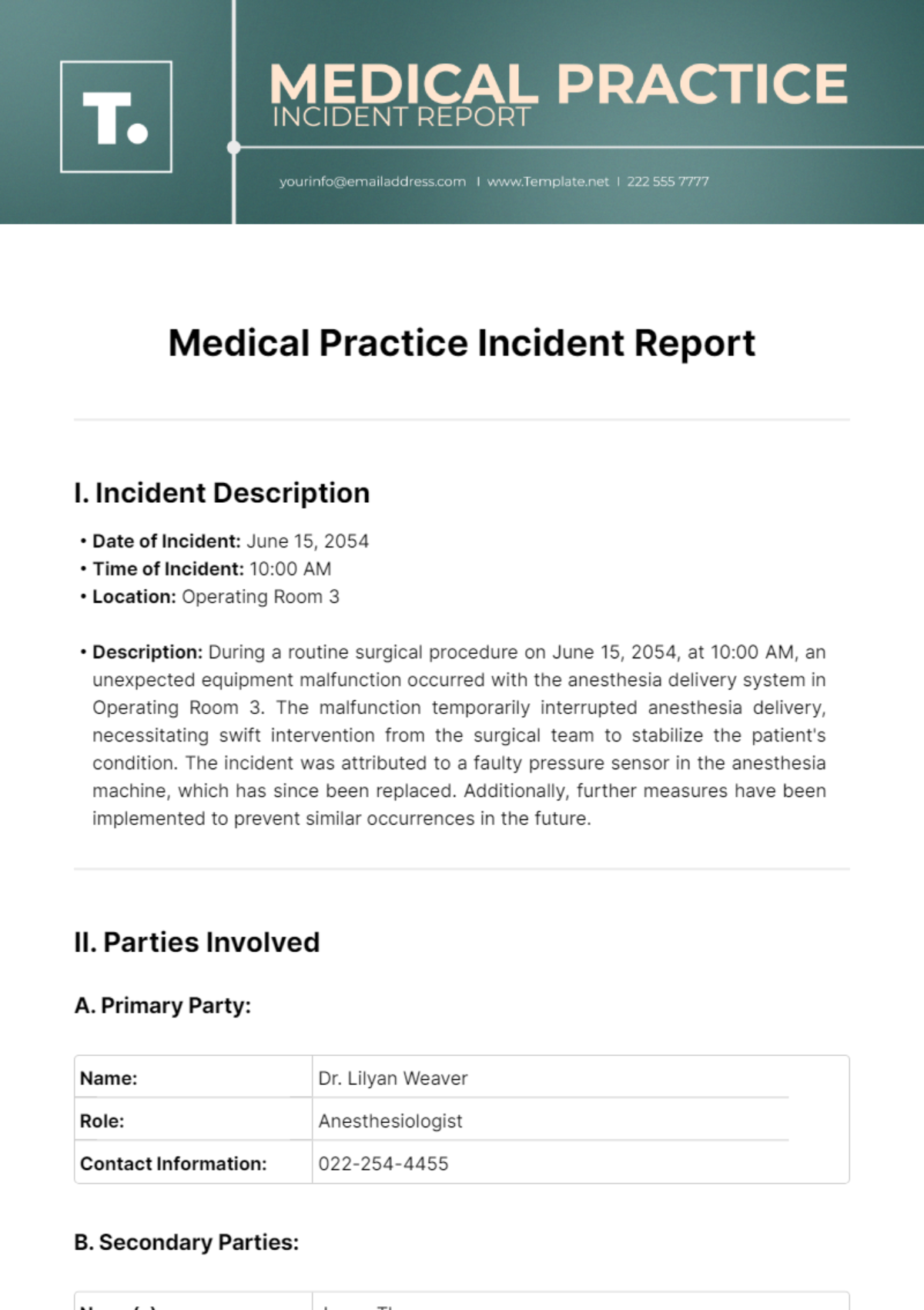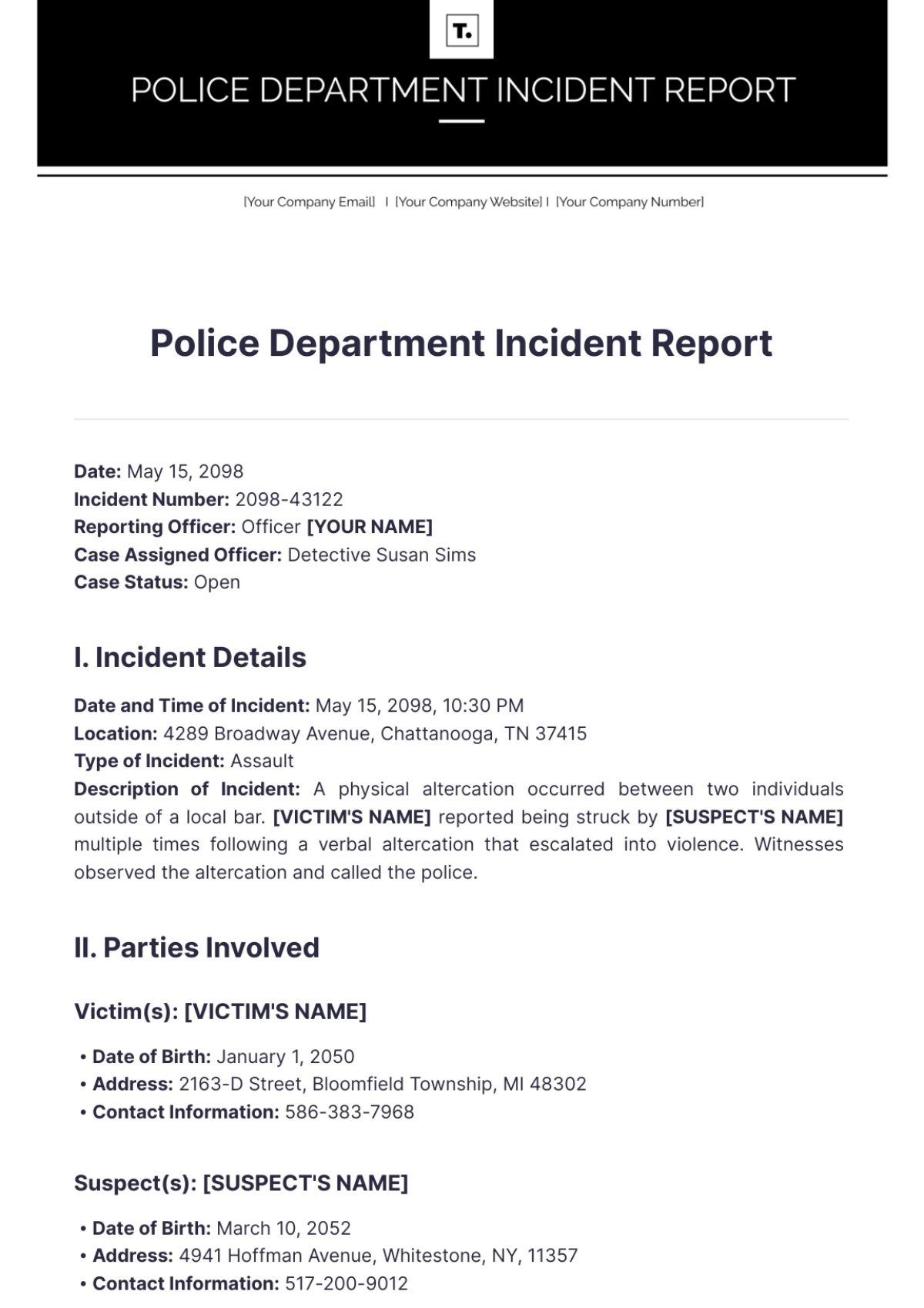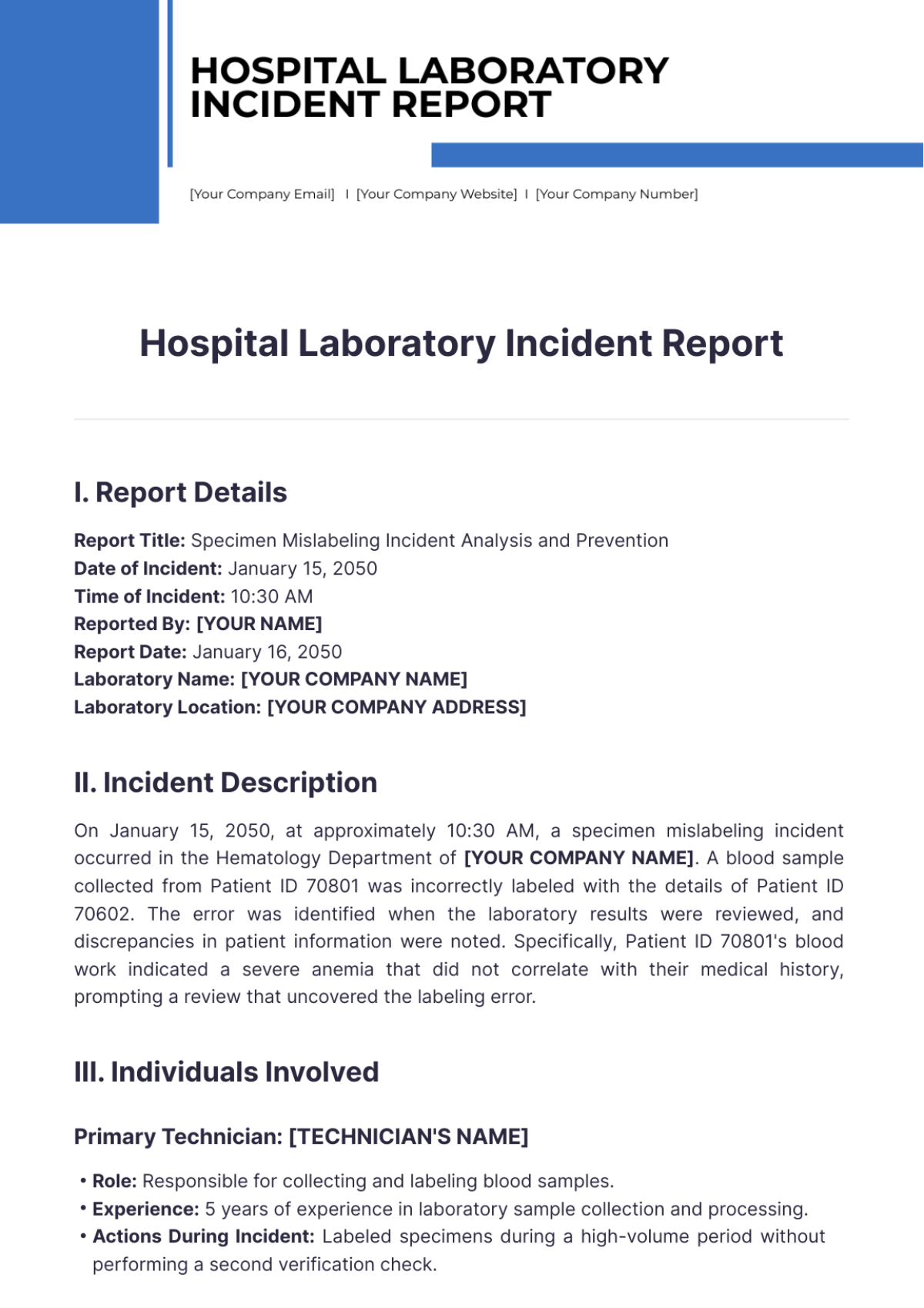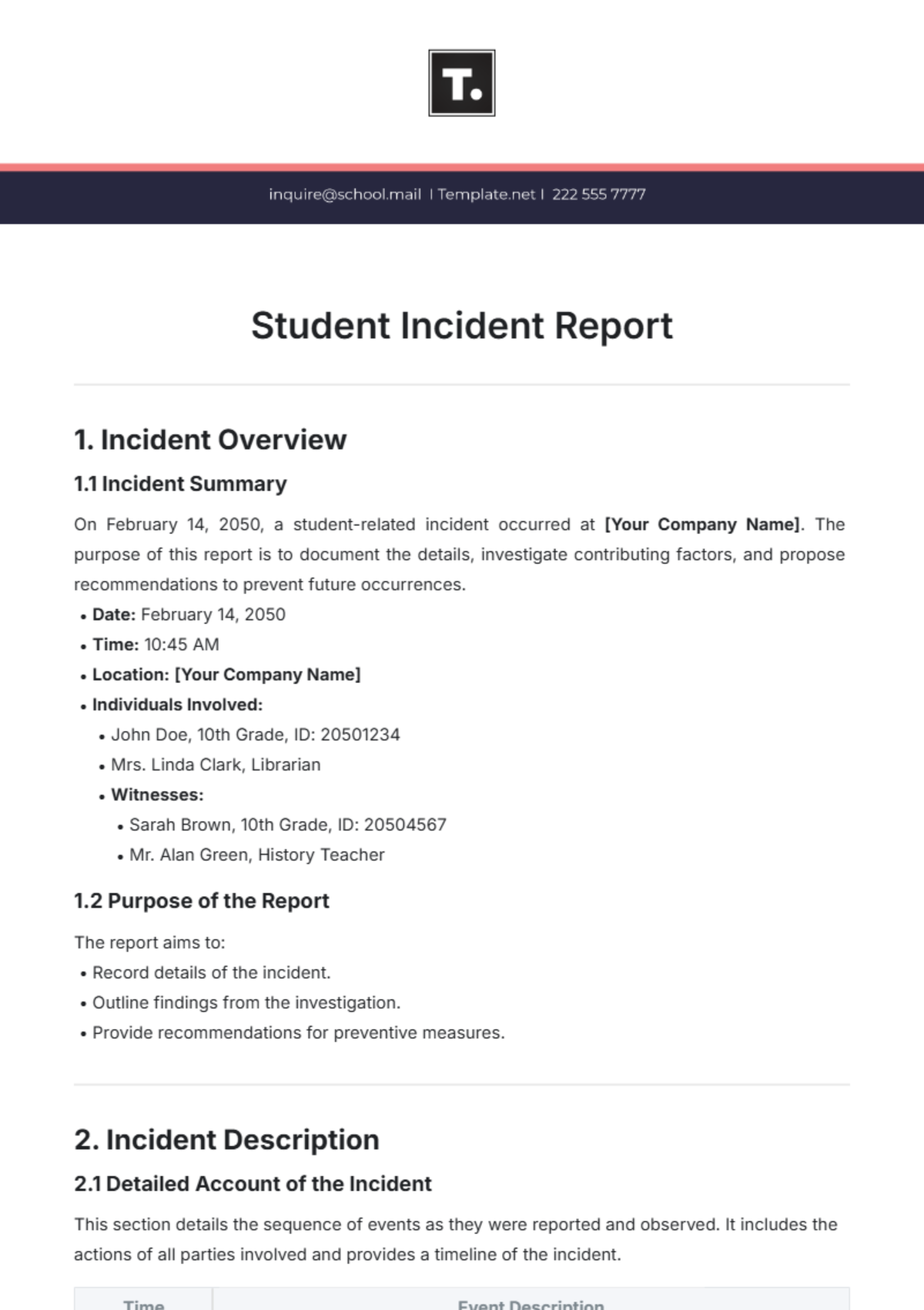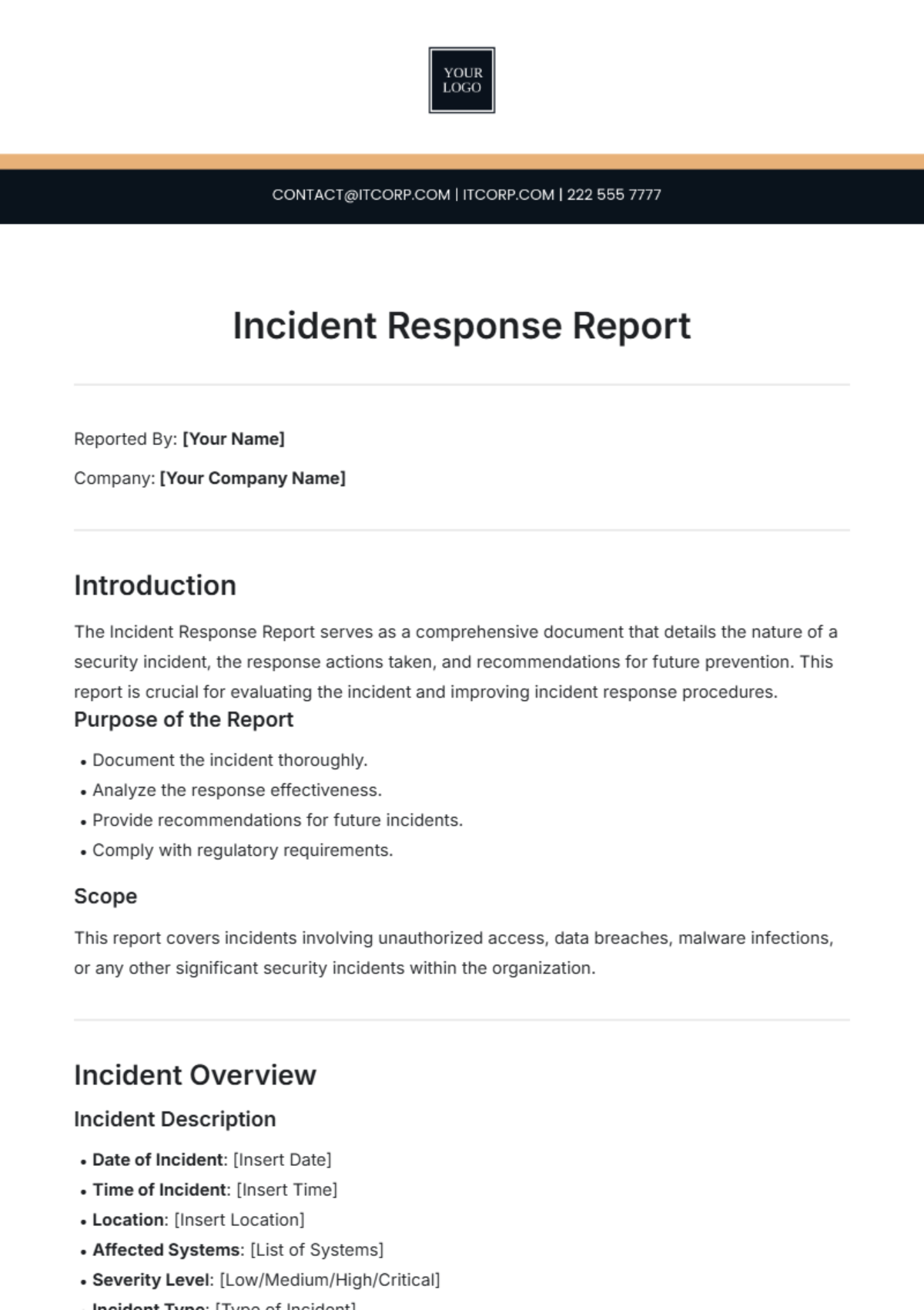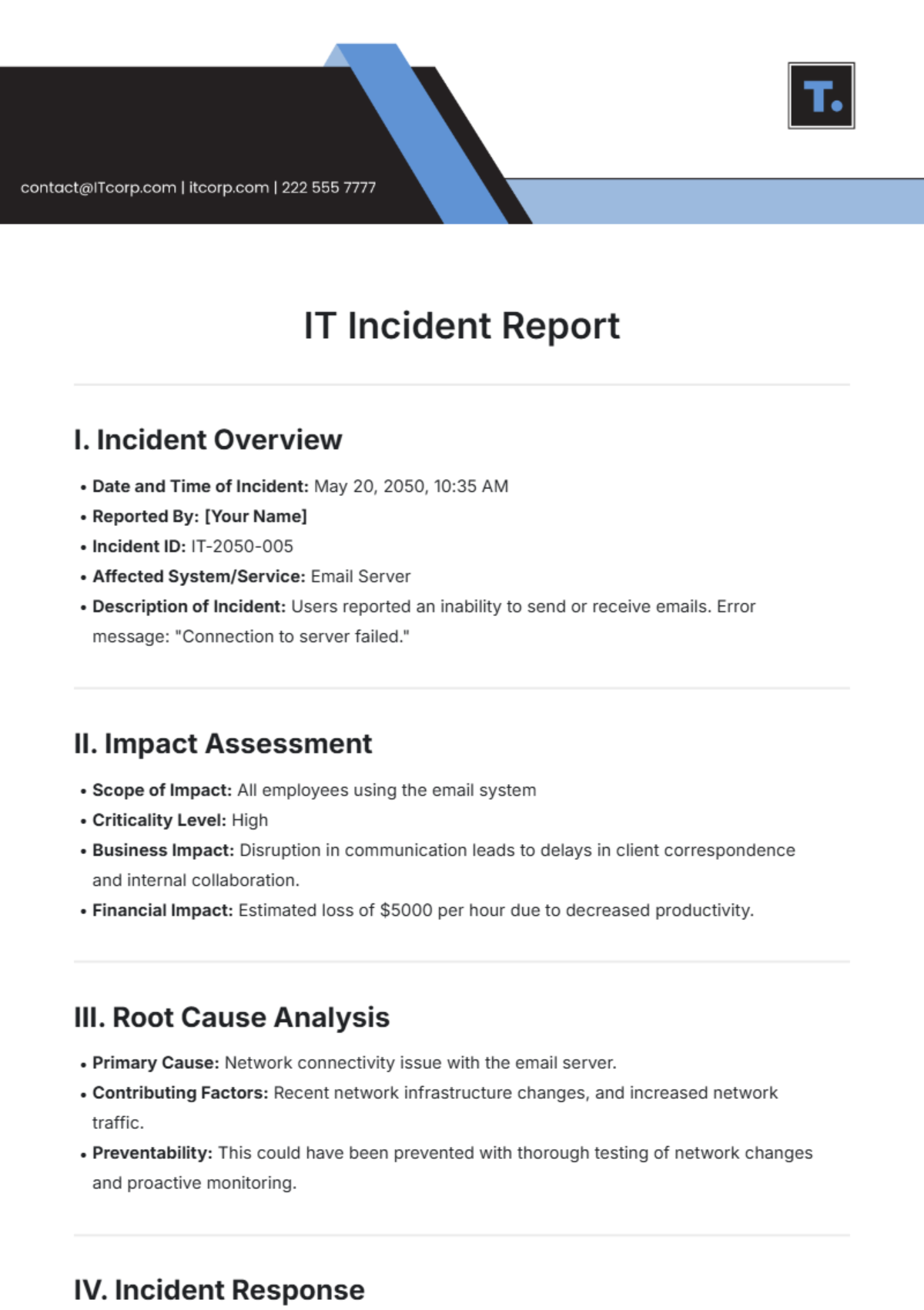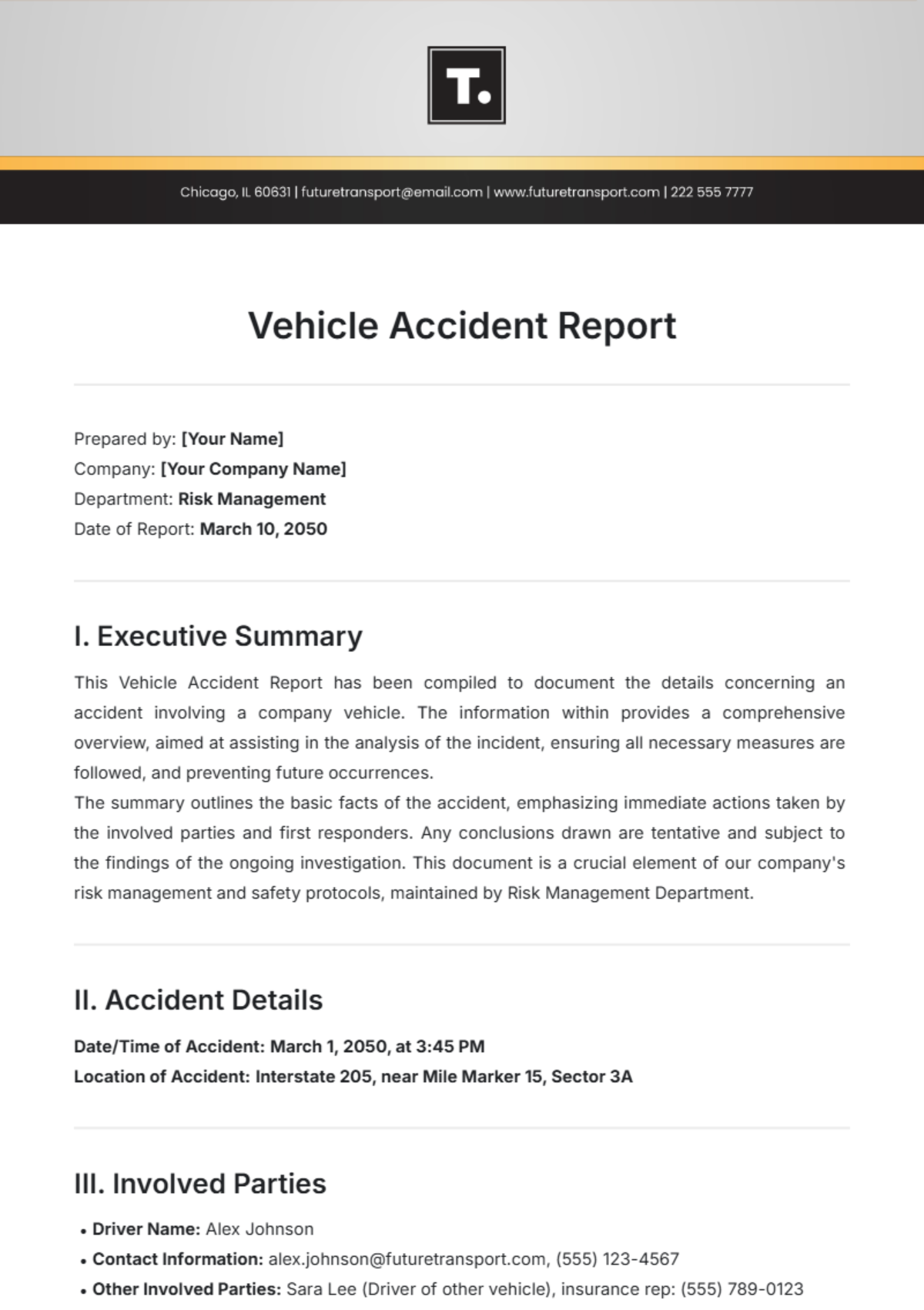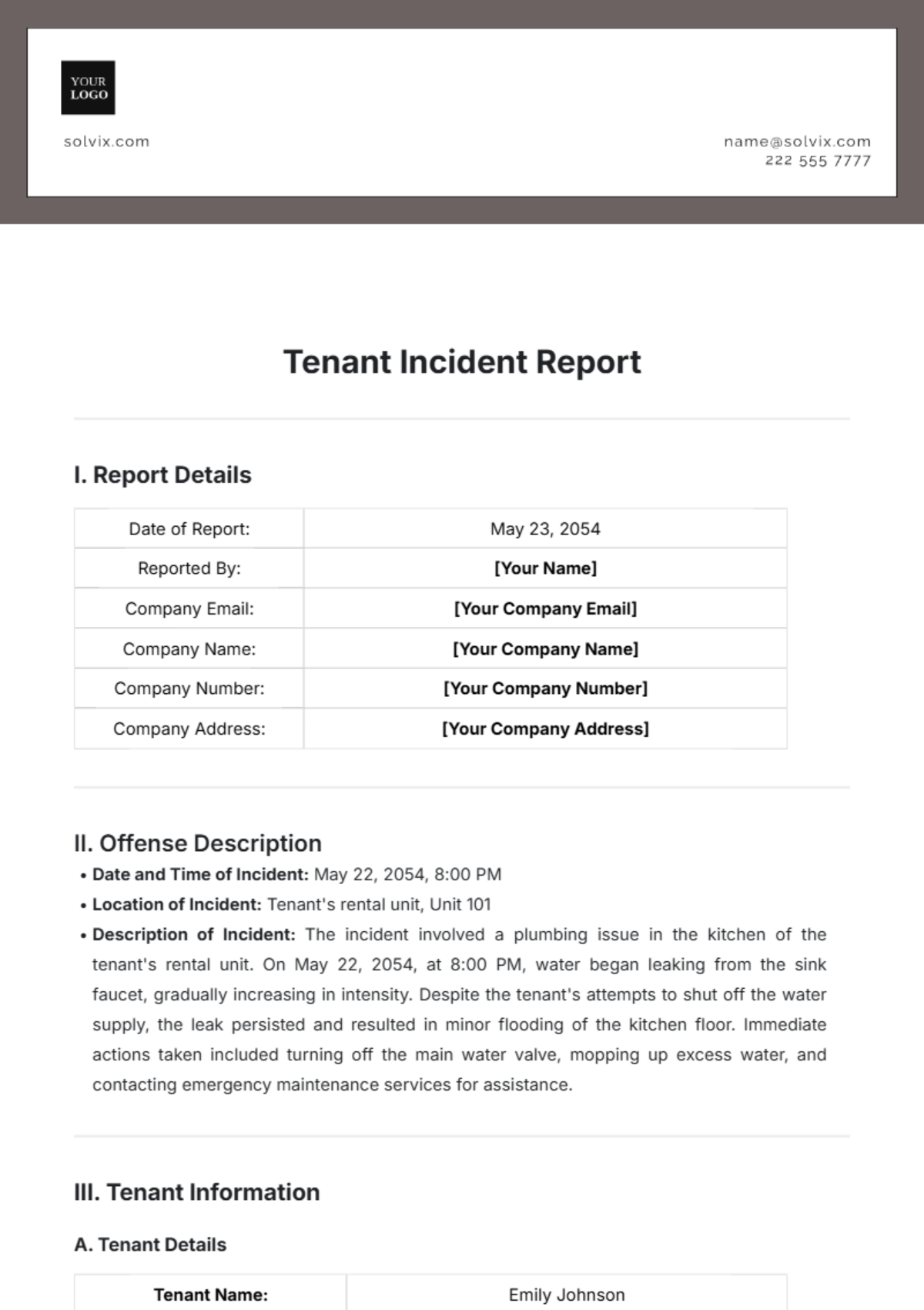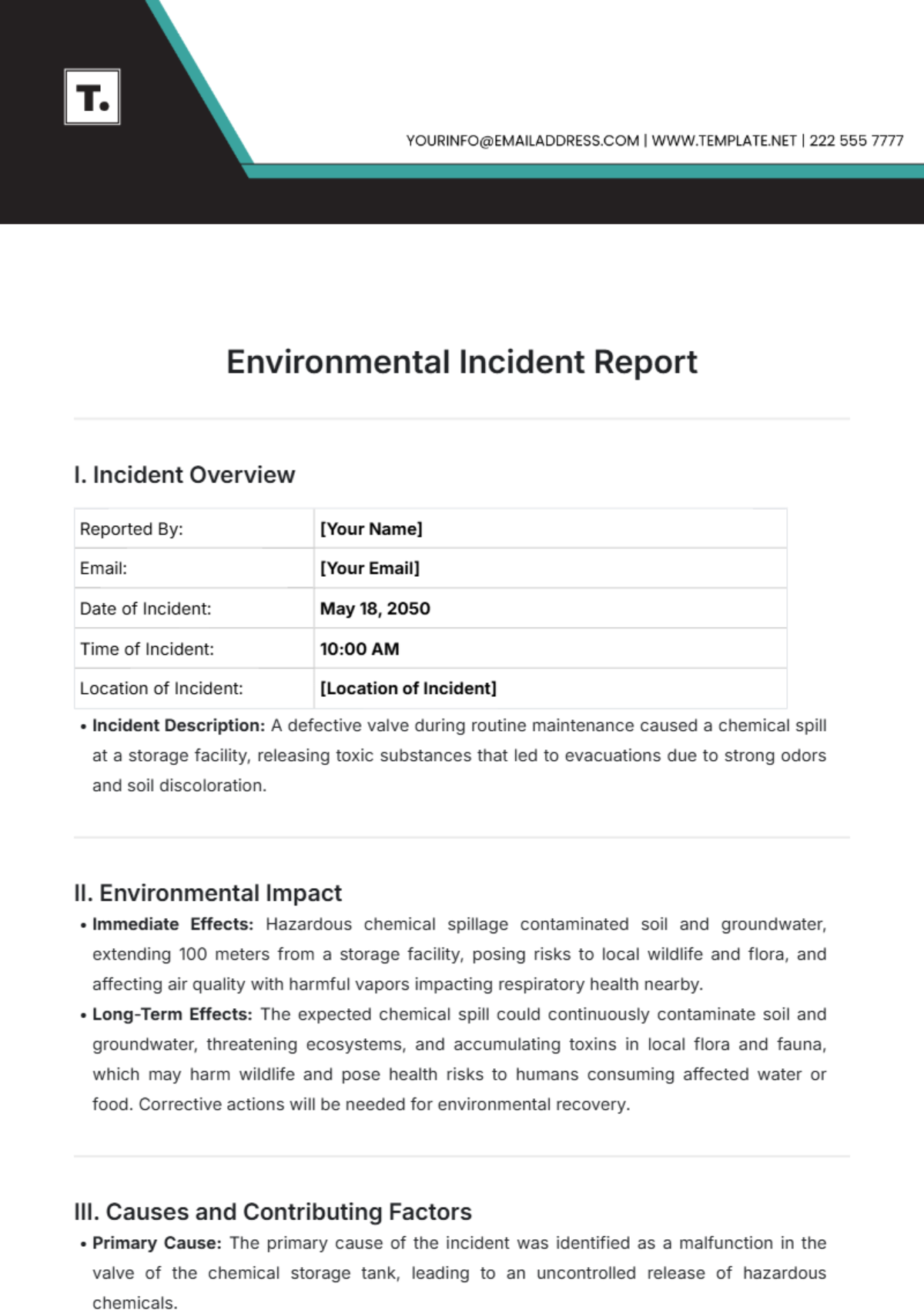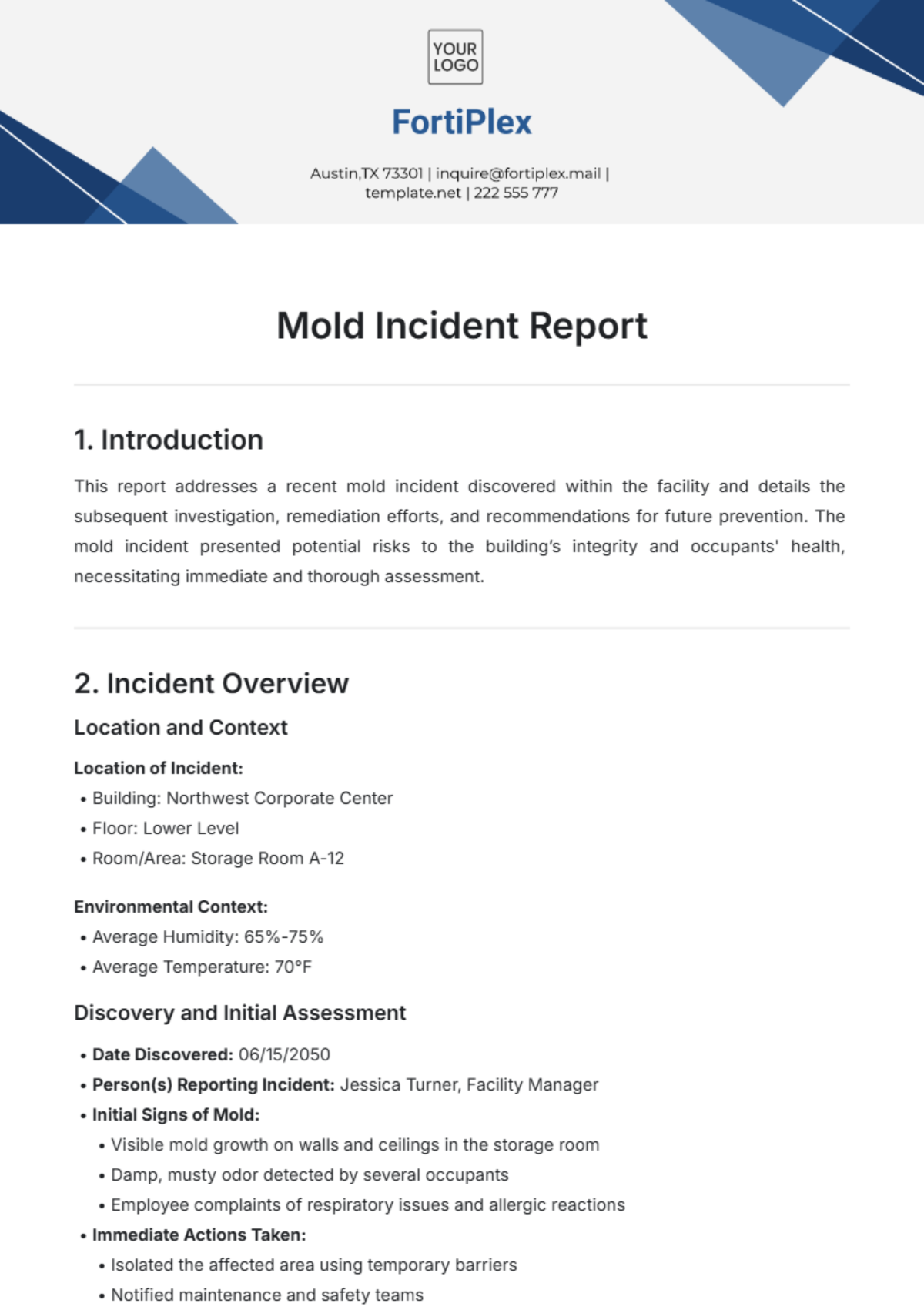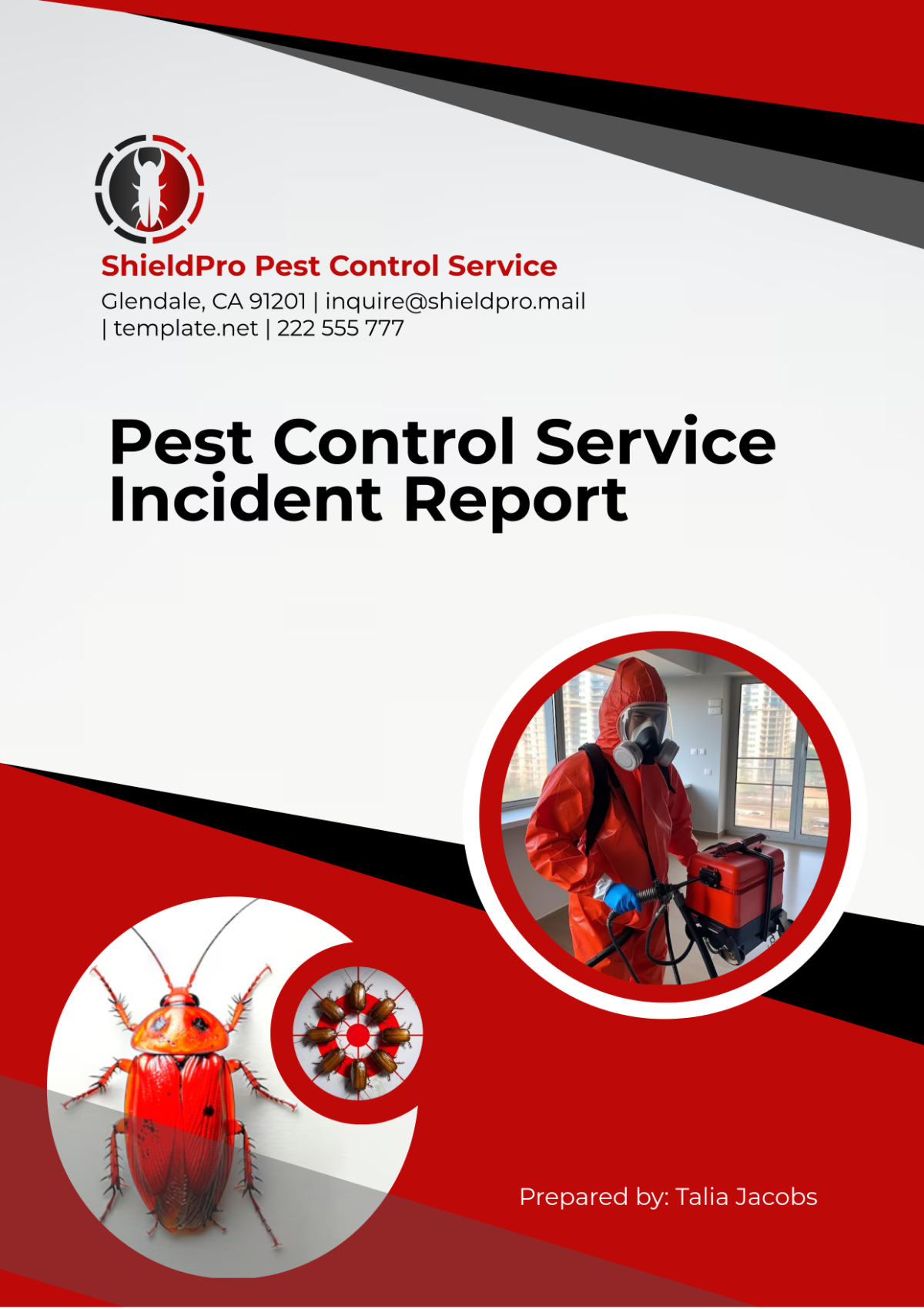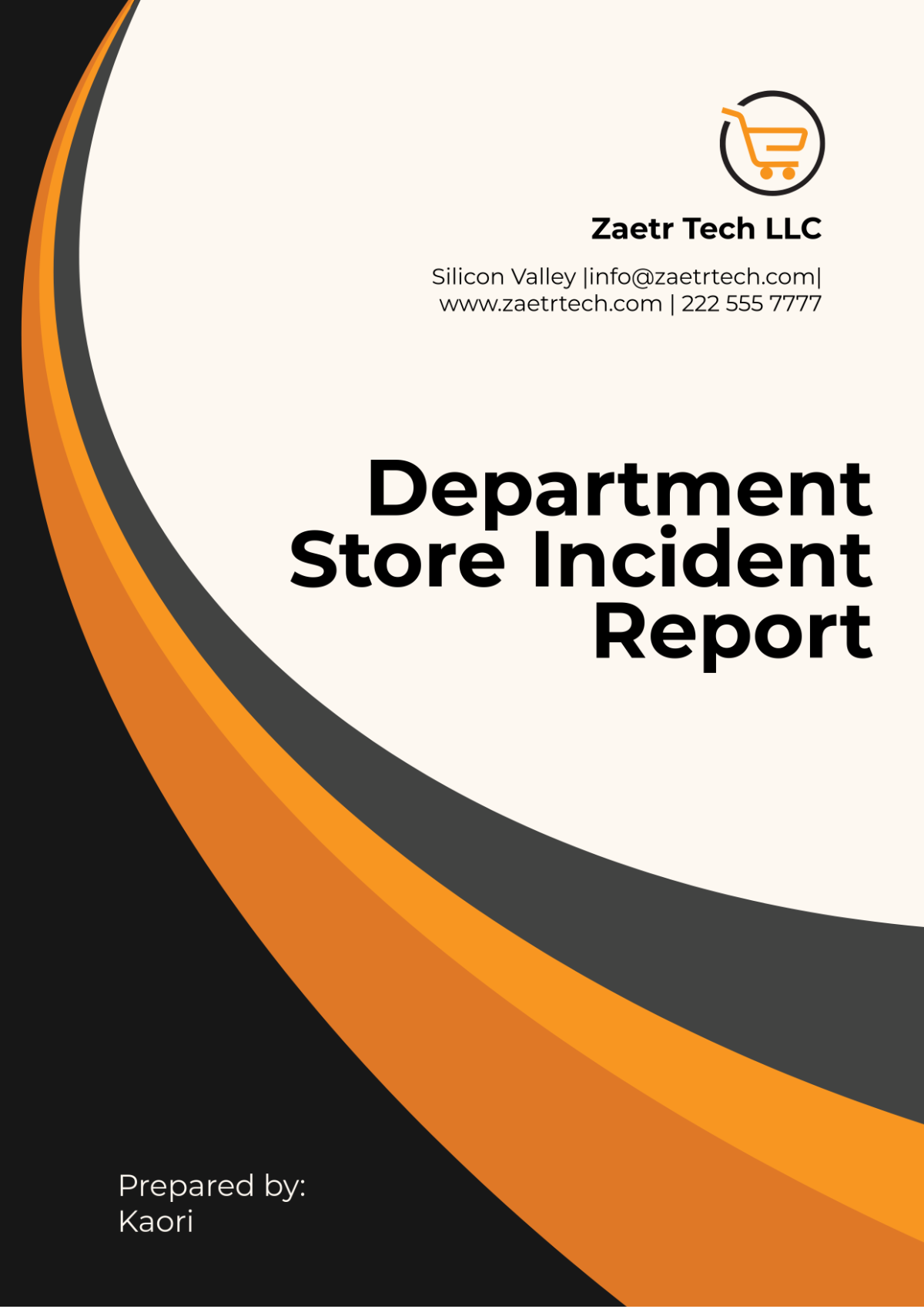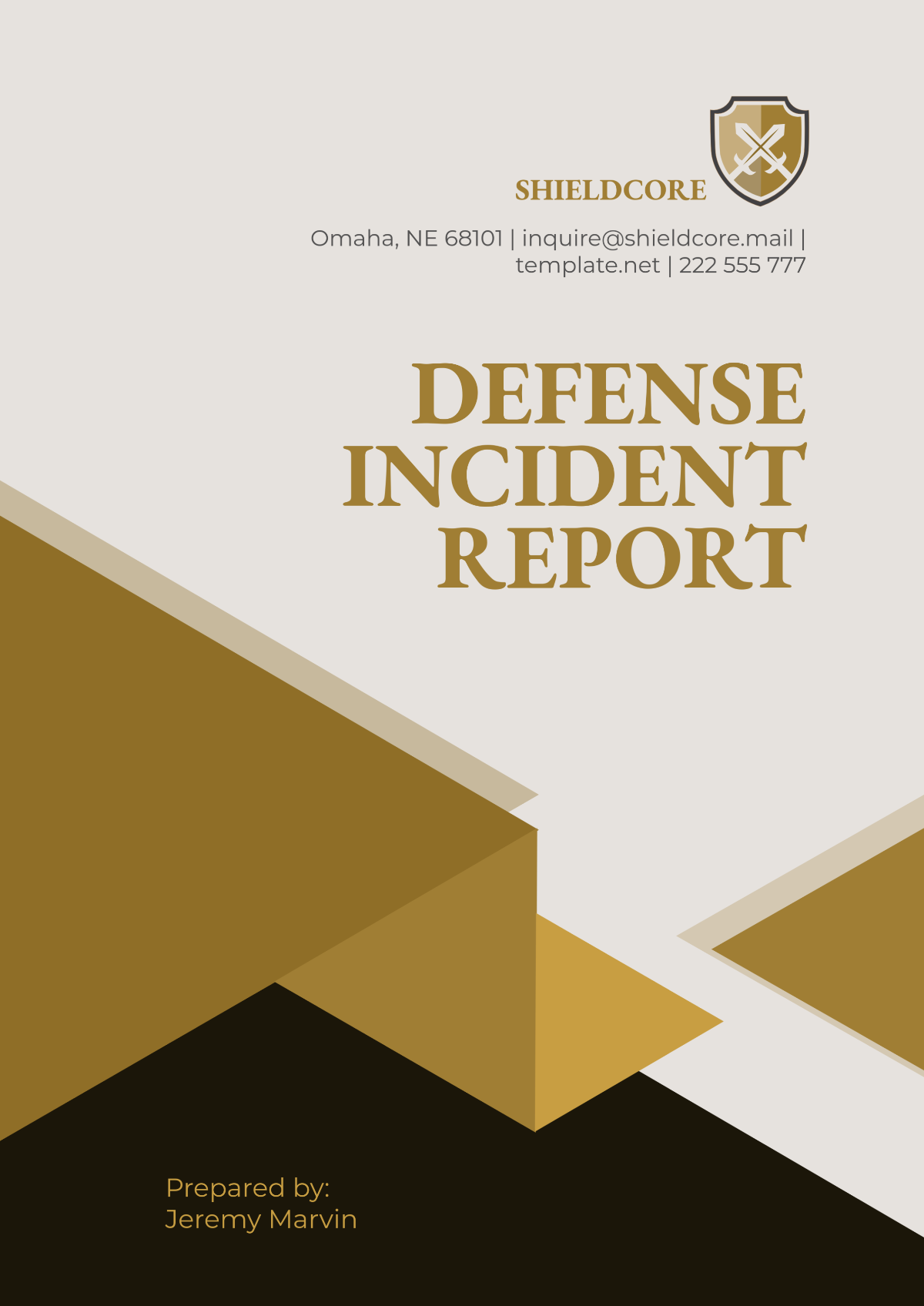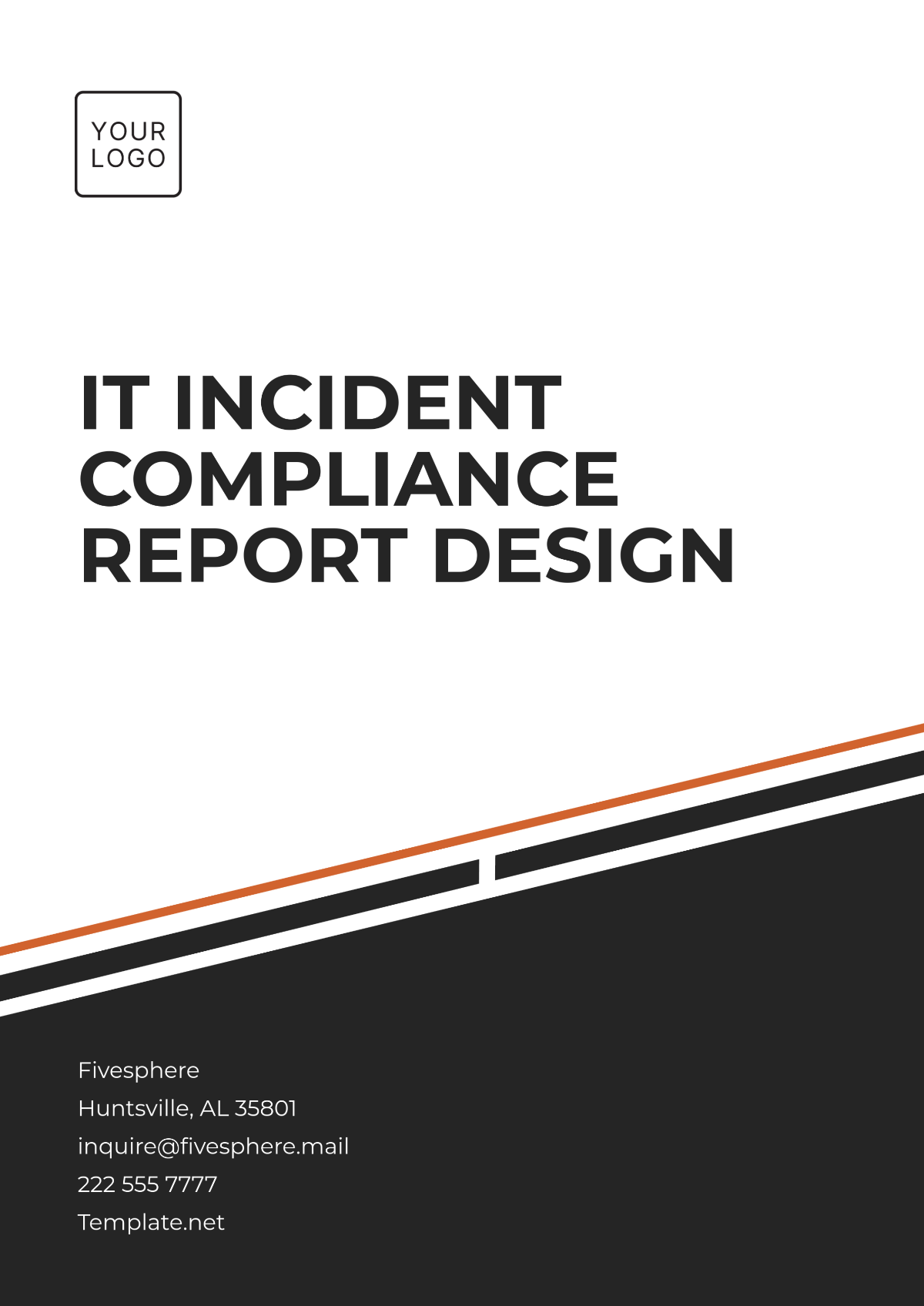Incident Response Report
Company: | [YOUR COMPANY NAME] | ||
Prepared by: | [YOUR NAME] | Date: | [DATE] |
I. Executive Summary
This Incident Response Report provides a comprehensive overview of the recent incident at [YOUR COMPANY NAME]. It summarizes the nature of the incident, the response actions taken, and the effectiveness of those actions. The objective of this report is to document the events and provide actionable insights for future incident prevention and response enhancement.
The report not only reflects on the procedural aspects but also evaluates the coordination among the involved teams and the technological tools leveraged during the incident handling. Each section systematically provides a detailed analysis to ensure that [YOUR COMPANY NAME] is equipped for future challenges.
II. Incident Overview
The section details the specifics of the incident including its discovery, cause, and immediate impact on the operations of [YOUR COMPANY NAME]. Complete understanding of these facets is crucial for comprehensive incident analysis.
Incident Identification: [INCIDENT ID]
Type of Incident: [TYPE OF INCIDENT]
Date and Time of Occurrence: [DATE AND TIME]
Initial Detection Method: [DETECTION METHOD]
Affected Systems: [AFFECTED SYSTEMS]
III. Incident Response
This section outlines the steps taken by [YOUR COMPANY NAME] upon detecting the incident. It provides a chronological account of the response activities, highlighting the decision-making processes and operational adjustments made to mitigate the incident's impact.
Notification to Incident Response Team
Initial Assessment and Containment Procedures
System and Data Recovery Actions
Post-Incident Review and Debriefing
IV. Impact Assessment
An analysis of the incident's impact on business operations, data integrity, and customer trust is essential for understanding its severity. This section evaluates the short-term and potential long-term consequences faced by [YOUR COMPANY NAME].
Immediate Operational Impact
Financial Implications
Reputation Damage and Customer Impact
Legal and Compliance Issues
V. Lessons Learned and Future Recommendations
The findings from this incident provide valuable insights into the vulnerabilities and strengths of [YOUR COMPANY NAME]'s current security posture. This section suggests improvements and strategies for bolstering incident response capabilities and overall security framework.
Key recommendations include enhanced training for the incident response team, adoption of advanced security technologies, and regular security audits to identify and rectify potential vulnerabilities. Effective implementation of these recommendations can significantly reduce the likelihood and impact of future incidents.
VI. Methodology
The methodology employed for this Incident Response Report involved a structured approach to gathering and analyzing information related to the incident at [YOUR COMPANY NAME]. The process encompassed the following key steps:
Incident Documentation Review: Comprehensive review of incident reports, logs, and relevant documentation to understand the sequence of events leading to the incident, initial response actions, and subsequent remediation efforts.
Stakeholder Interviews: Conducting interviews with key stakeholders involved in incident detection, response, and recovery to gain insights into their perspectives, challenges faced, and lessons learned during the incident handling process.
Impact Assessment: Evaluation of the impact of the incident on various aspects of [YOUR COMPANY NAME]'s operations, including but not limited to, financial losses, operational disruptions, reputational damage, and regulatory compliance issues.
VII. Findings
The findings from the methodology employed revealed several critical aspects of the incident at [YOUR COMPANY NAME]:
Nature of the Incident: The incident, identified as [TYPE OF INCIDENT], was characterized by [DESCRIPTION OF INCIDENT], posing significant challenges to [YOUR COMPANY NAME]'s operations and security posture.
Response Effectiveness: Despite the challenges encountered, the response actions taken by [YOUR COMPANY NAME] demonstrated a commendable level of coordination, agility, and adaptability in containing the incident and minimizing its impact.
Root Cause Analysis: Through technical analysis and forensic investigation, the root cause of the incident was attributed to [ROOT CAUSE], highlighting the importance of addressing underlying vulnerabilities in [YOUR COMPANY NAME]'s IT infrastructure and security controls.
Impact Assessment: The incident had a notable impact on [YOUR COMPANY NAME]'s business operations, resulting in [IMPACT DESCRIPTION], underscoring the need for proactive measures to mitigate such risks in the future.
VIII. Analysis
Based on the findings obtained, the following analysis can be made regarding the incident at [YOUR COMPANY NAME]:
Proactive Incident Response: The incident underscored the importance of swift threat detection, response, and communication to minimize impact on business and client trust.
Continuous Improvement: Regular training, simulation exercises, and tech advancements can enhance incident response capabilities, aiding in the effective mitigation of evolving cyber threats and potential risks.
Holistic Security Approach: [YOUR COMPANY NAME] should enhance security by adopting comprehensive cybersecurity strategies, including technology, robust policies, staff awareness programs, and managing third-party risks.
Regulatory Compliance: To reduce legal risks, protect sensitive data, and retain customer trust after security incidents, it's vital to comply with relevant regulations and industry standards.
Overall, the incident at [YOUR COMPANY NAME] serves as a valuable learning experience, prompting the organization to reassess its security strategies, reinforce its incident response capabilities, and prioritize proactive measures to safeguard against future threats. By incorporating the lessons learned and implementing the recommendations outlined in this report, [YOUR COMPANY NAME] can strengthen its resilience to cyber threats and enhance its overall security posture.
IX. Conclusion
This Incident Response Report serves as a critical document for [YOUR COMPANY NAME], encapsulating the key details and takeaways from the incident. The structured response and detailed analysis not only mitigated the incident's effects but also furnished the company with strategies to fortify its defenses.
By integrating the lessons learned into corporate policies and procedures, [YOUR COMPANY NAME] commits to superior readiness and resilience against future incidents, safeguarding its assets, and maintaining trust with clients and stakeholders.
